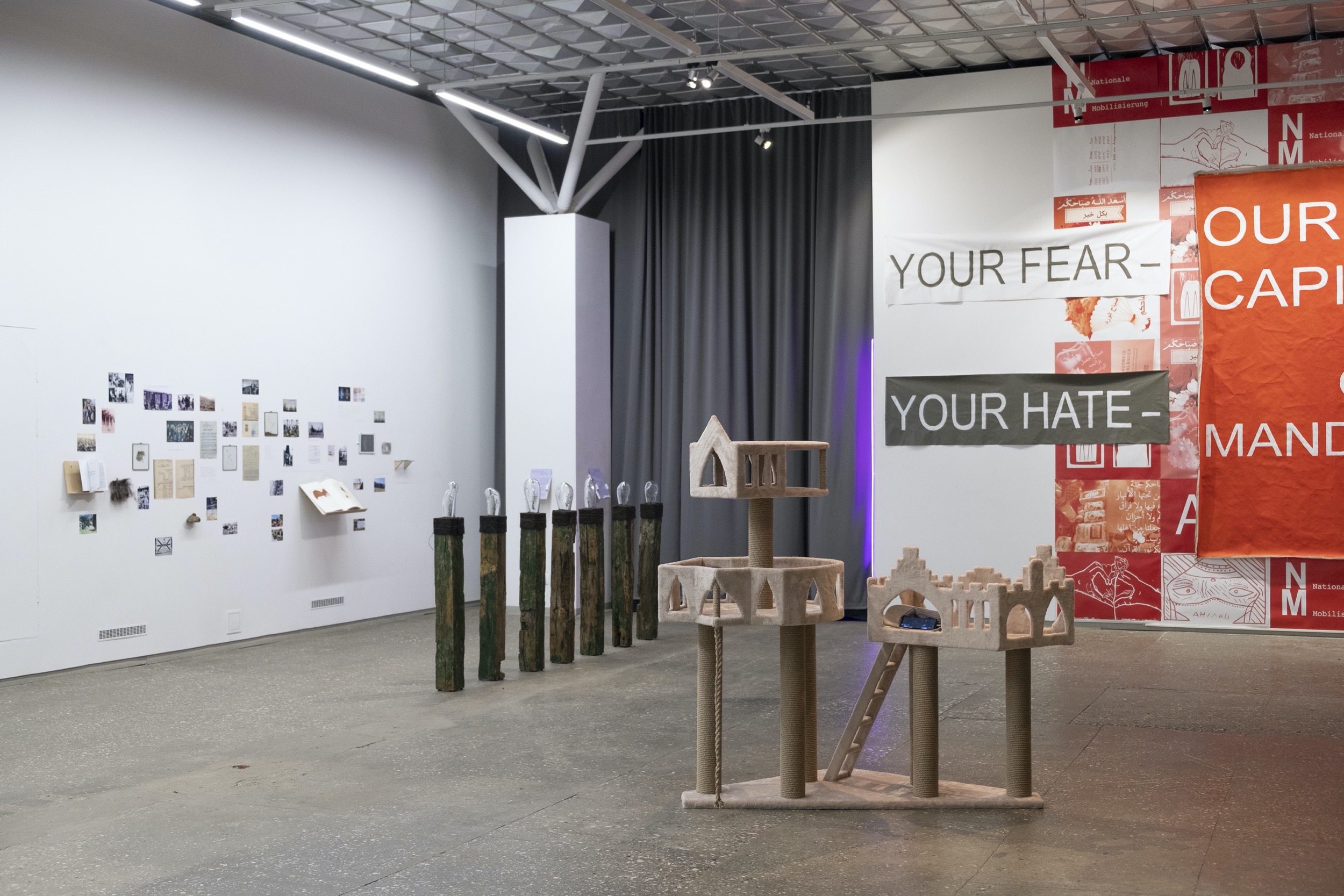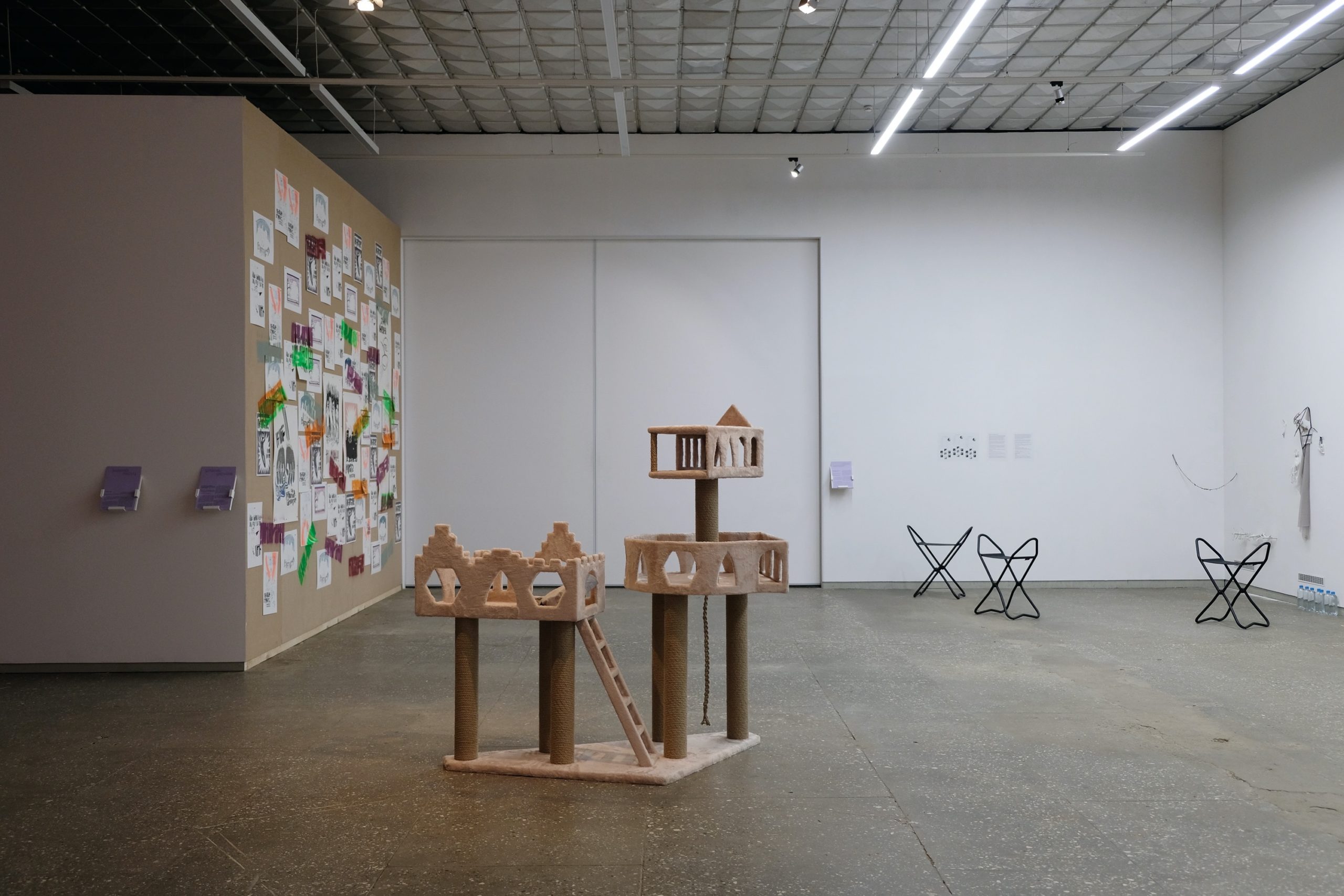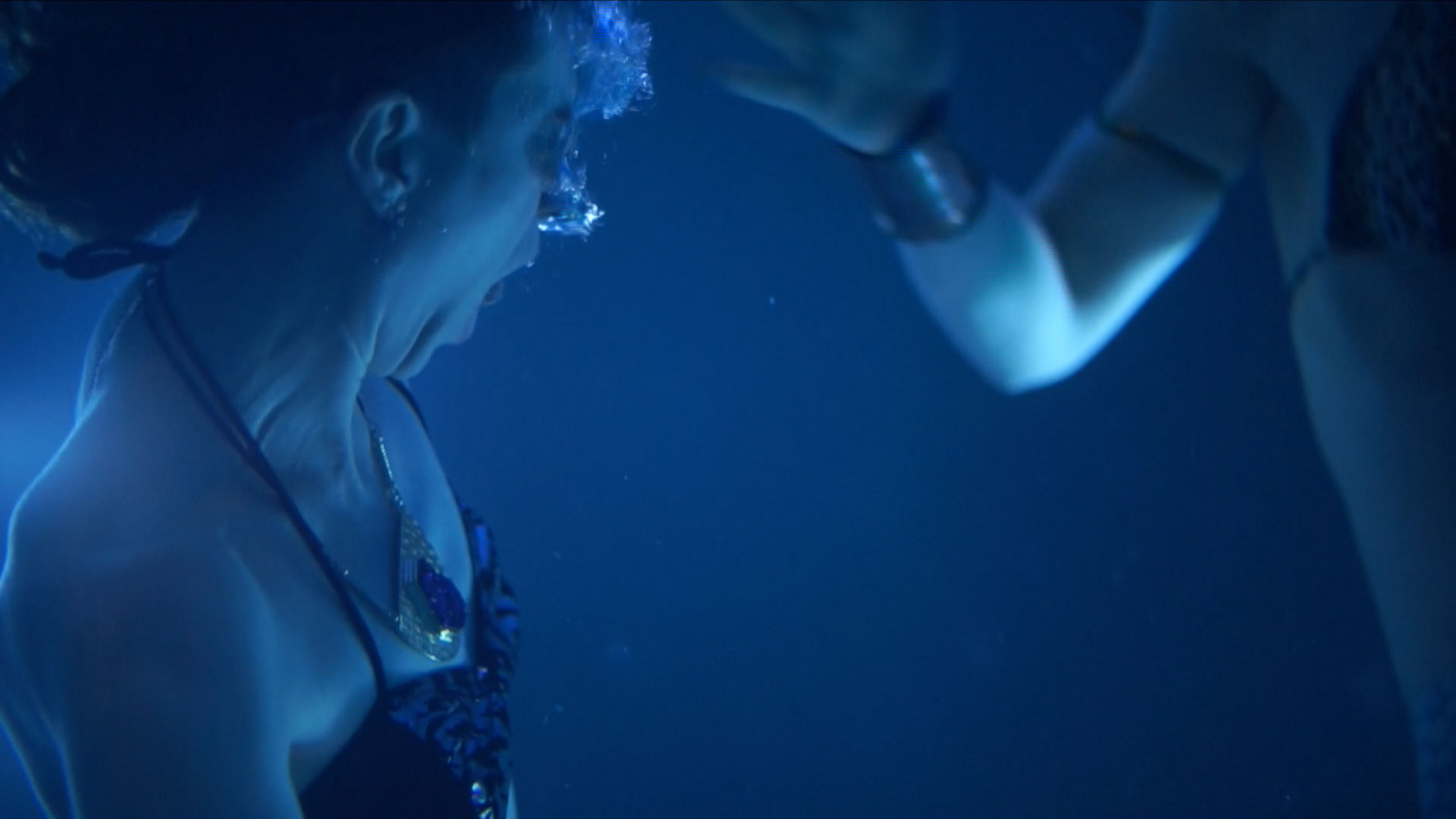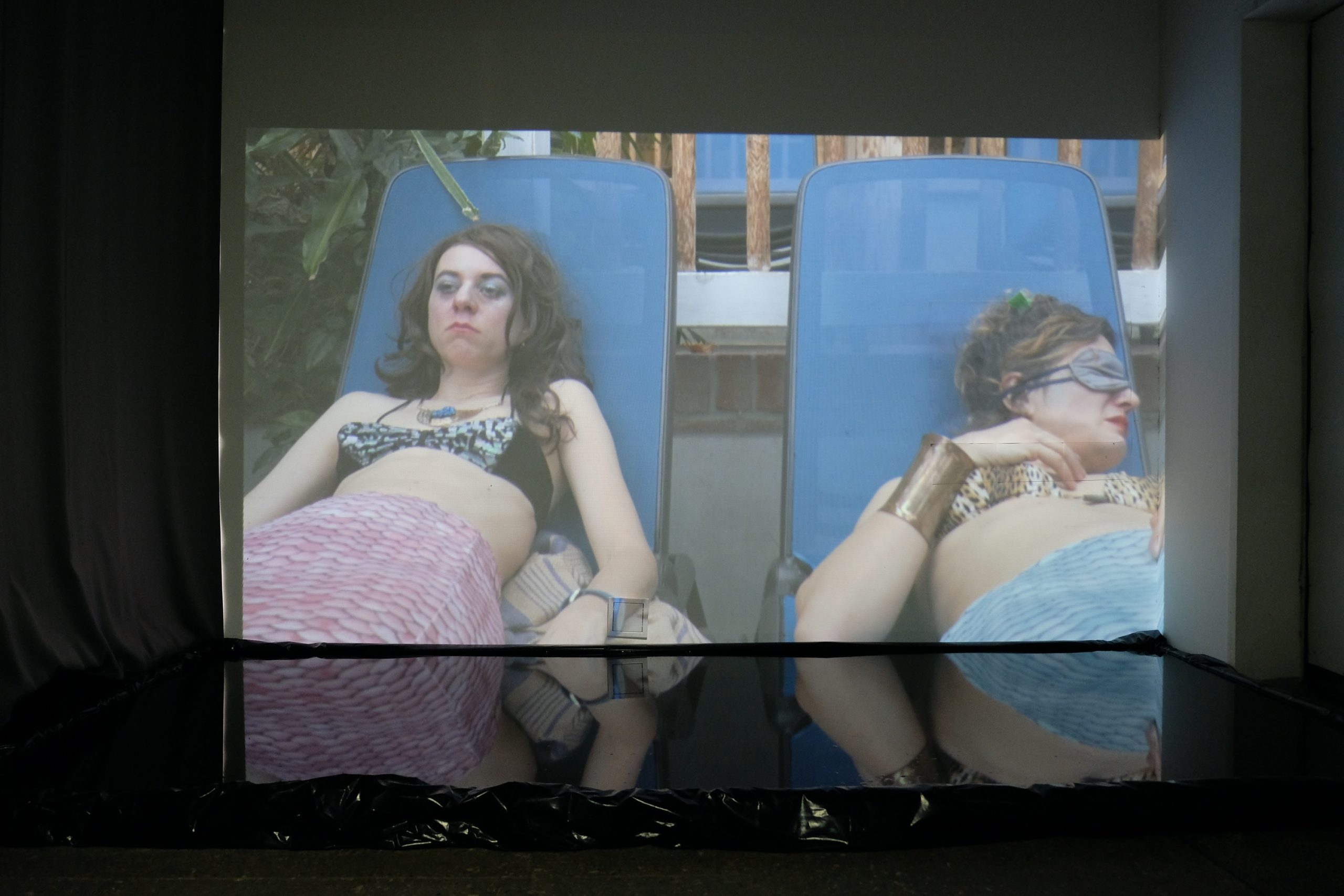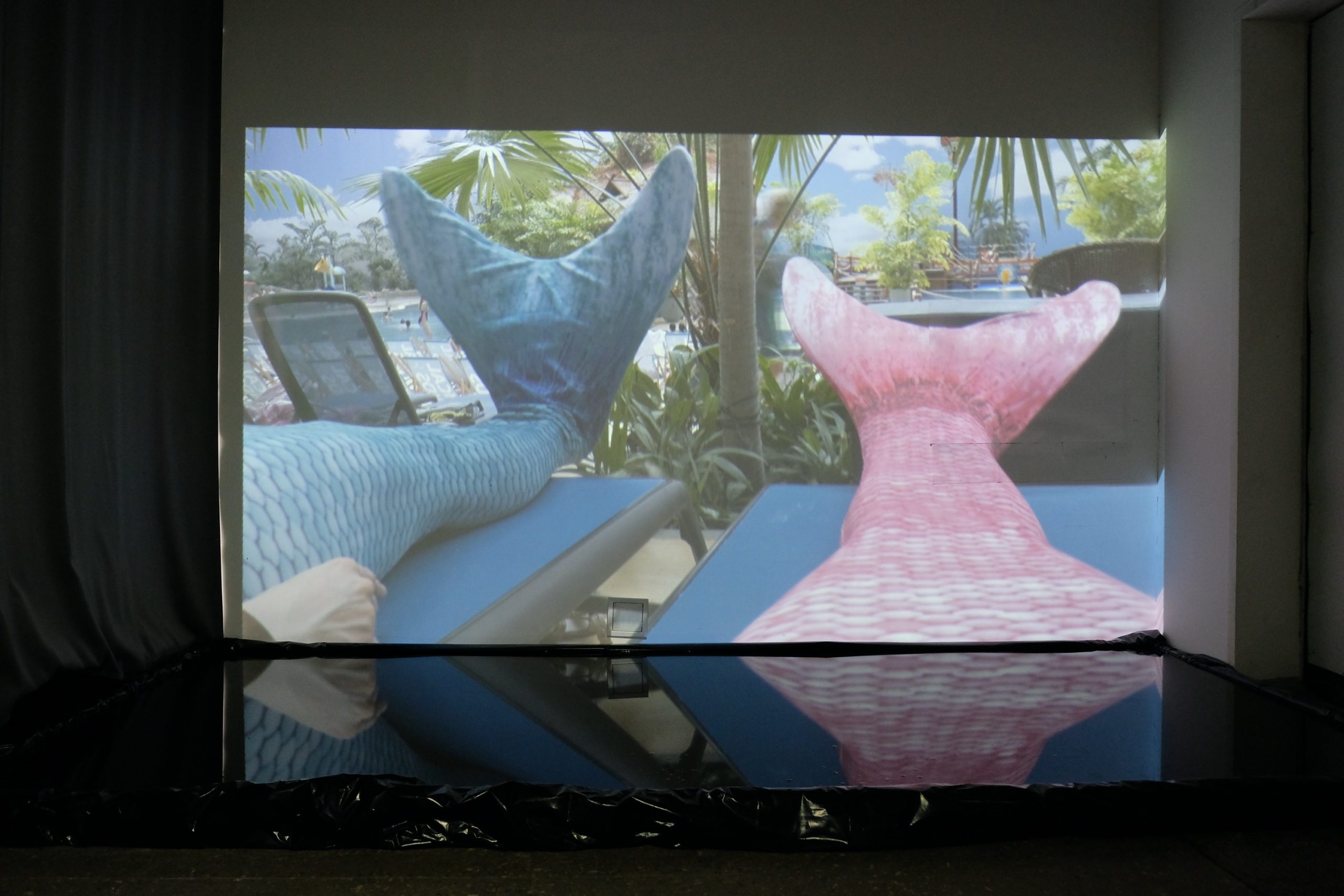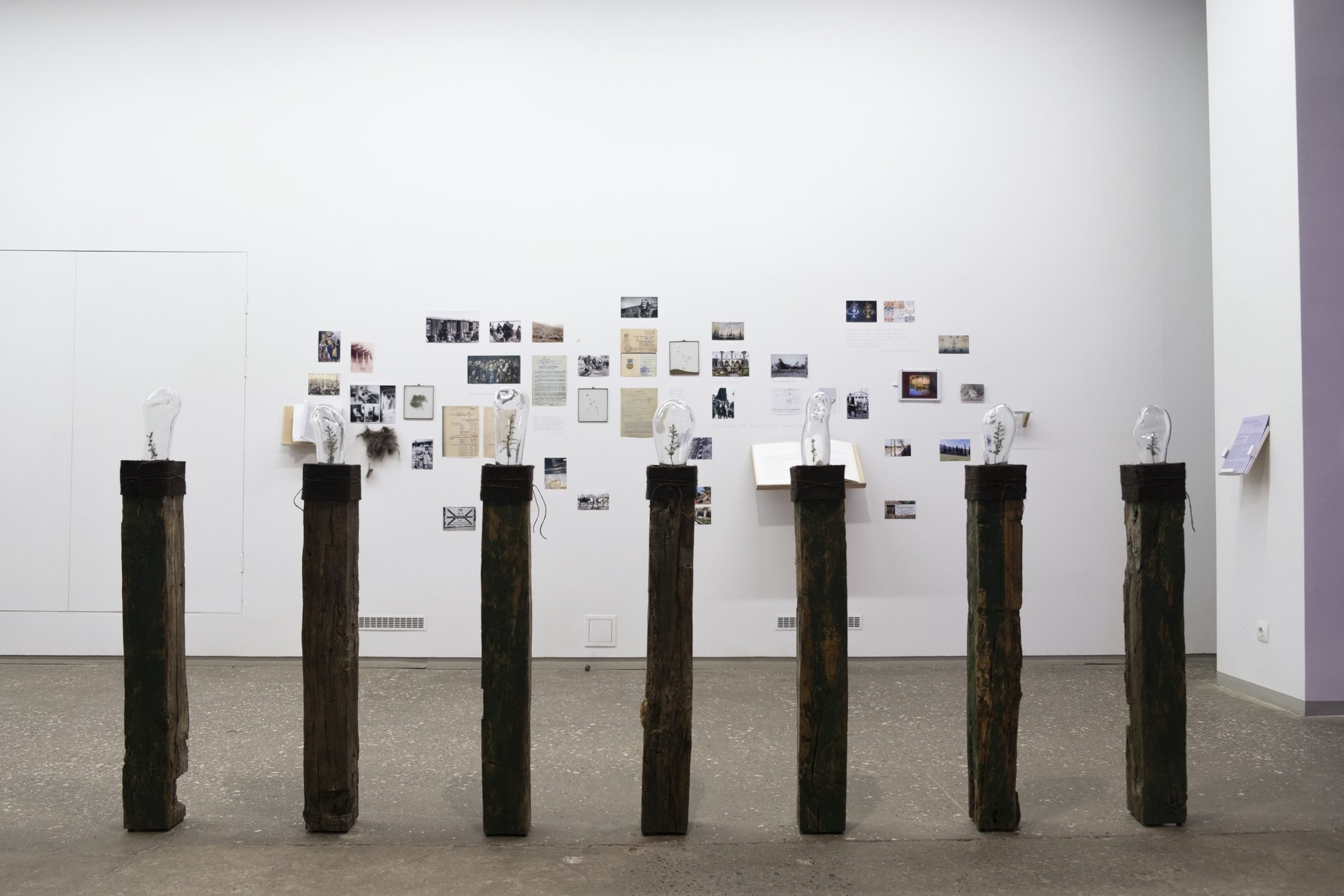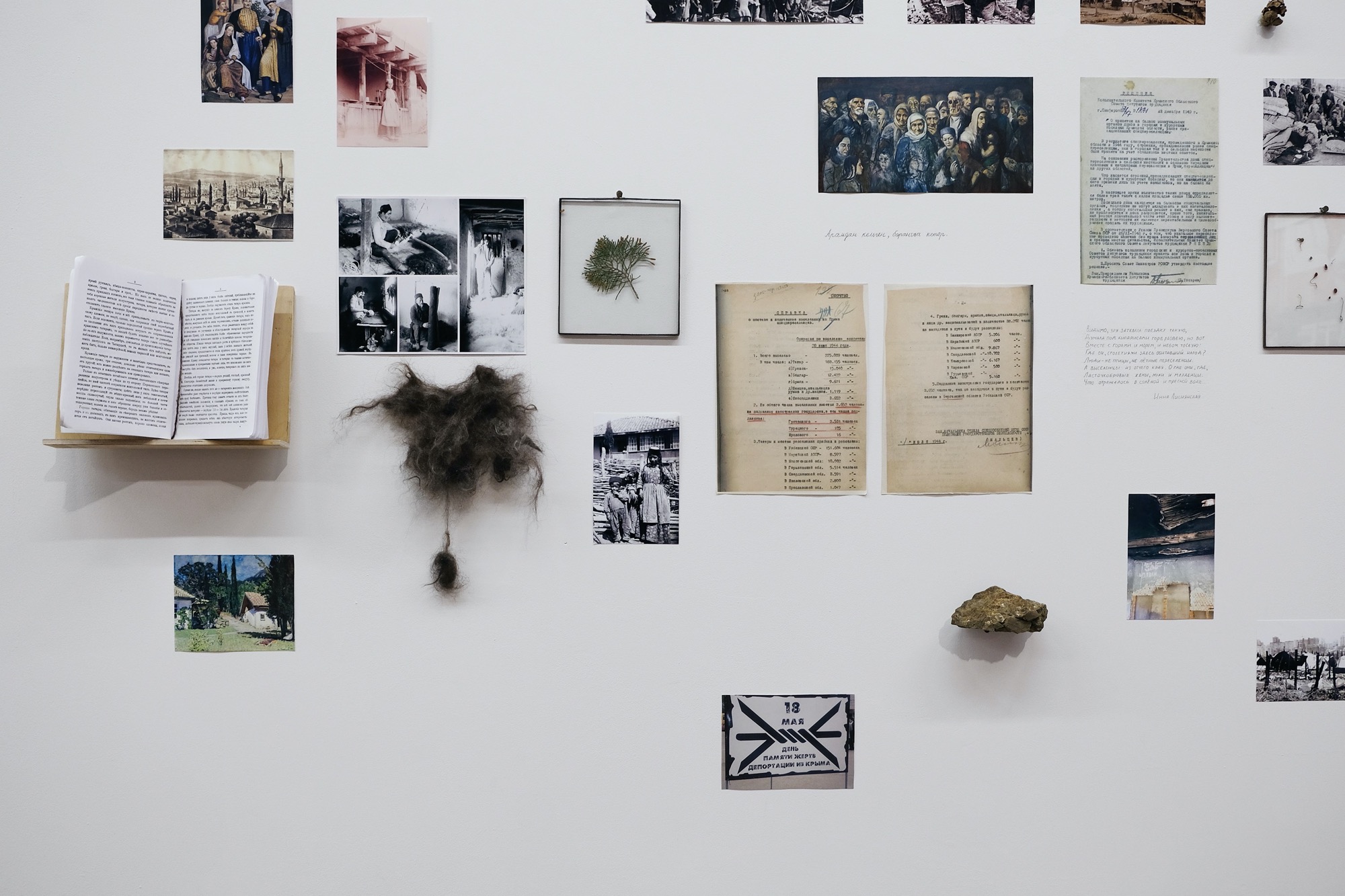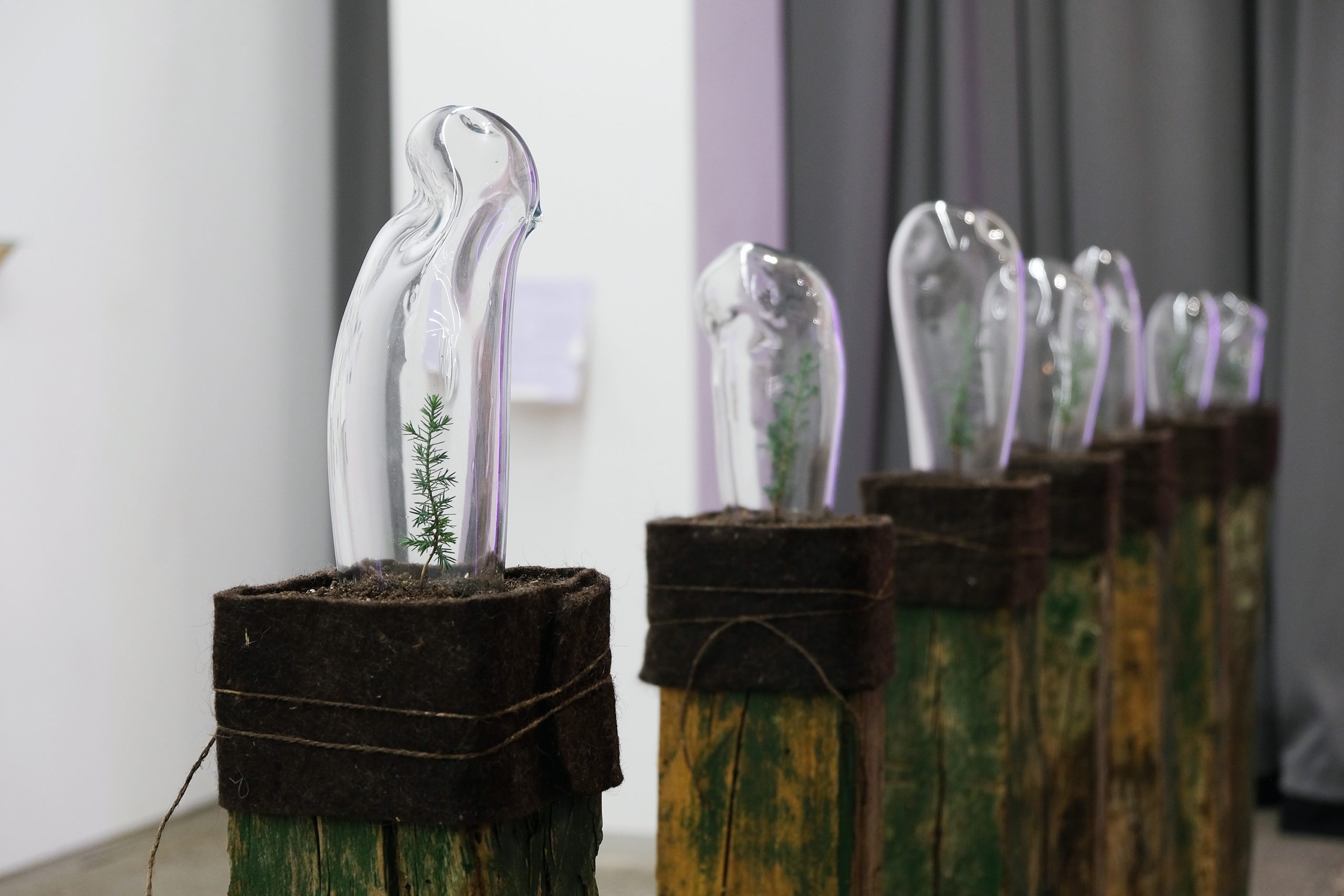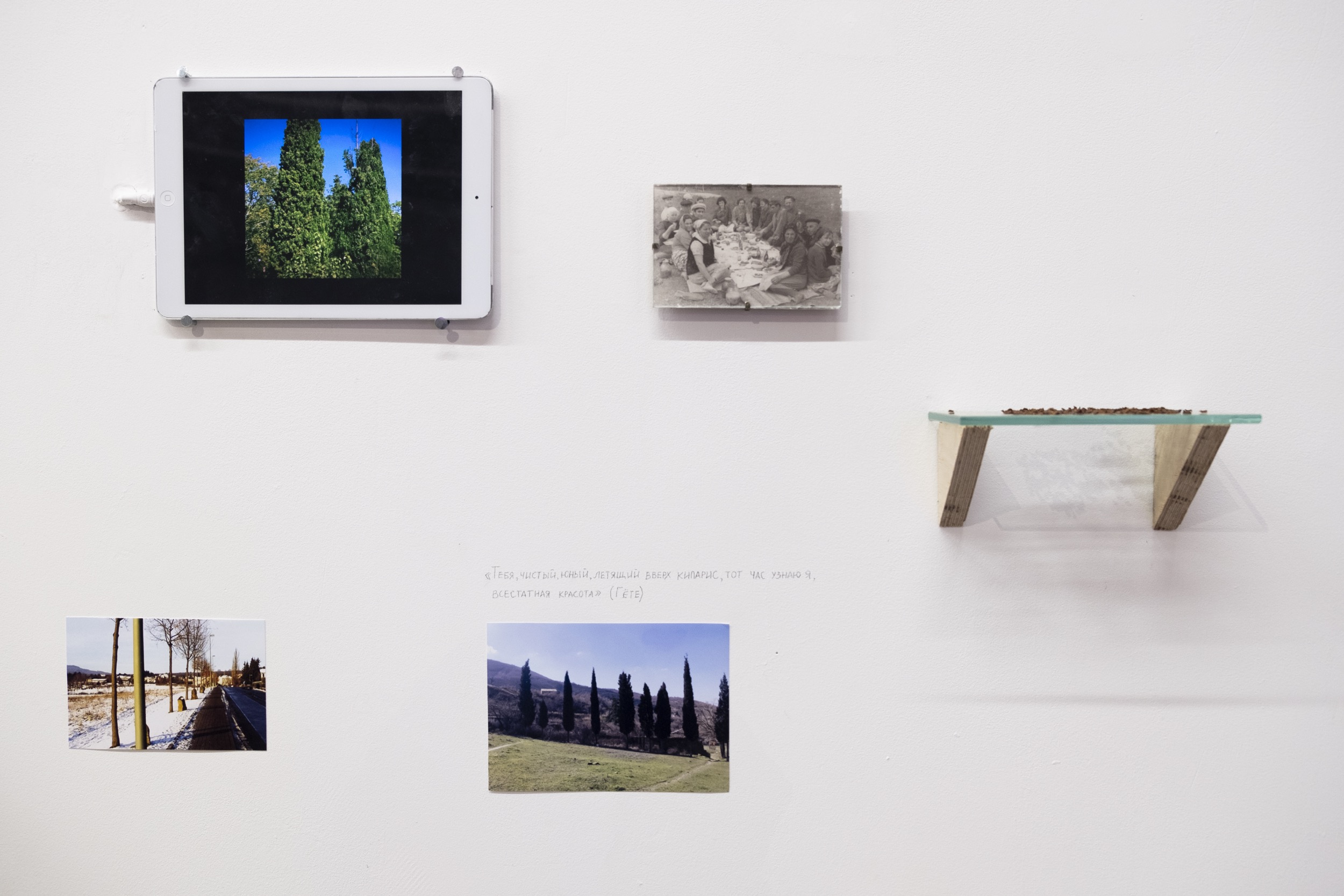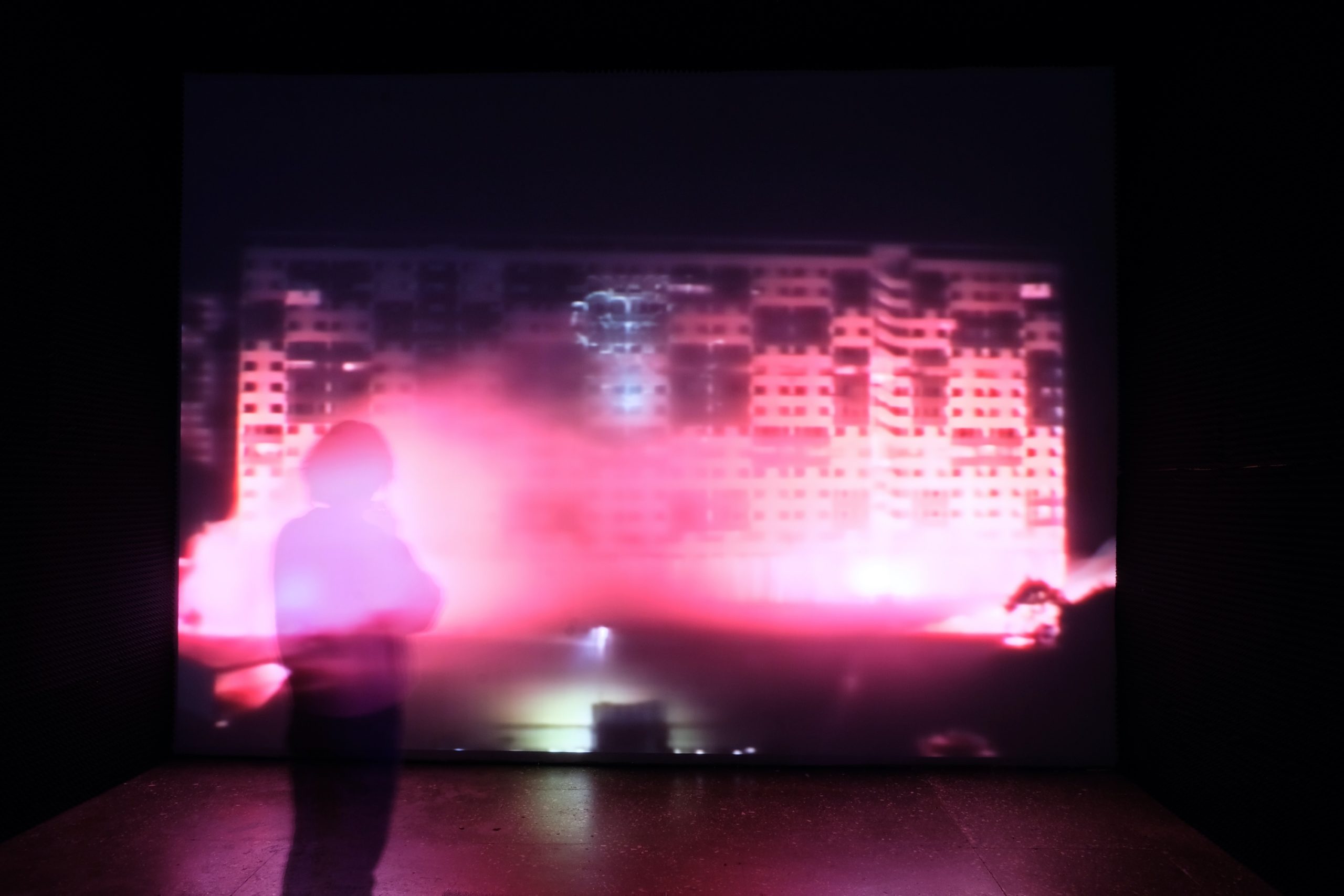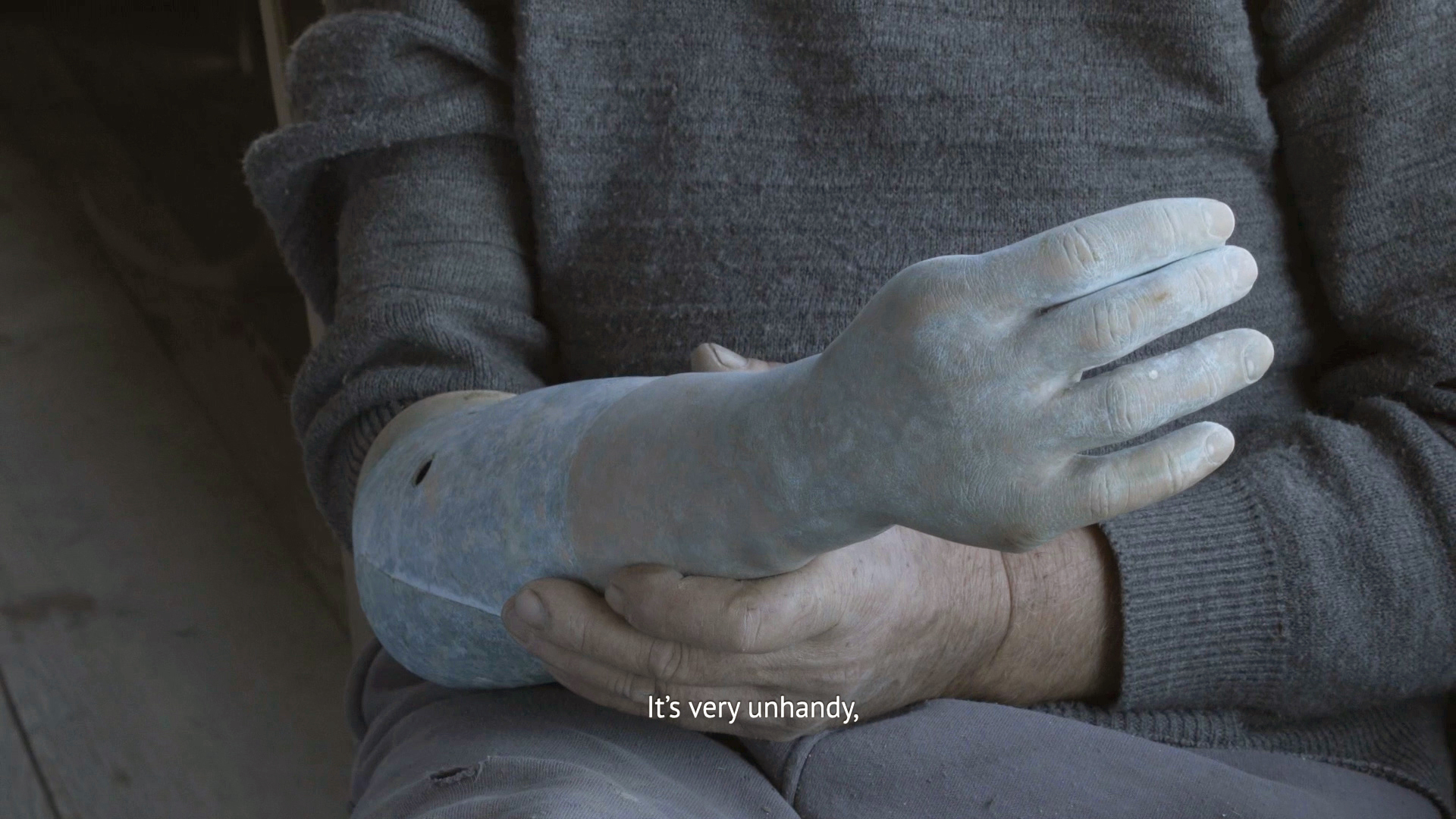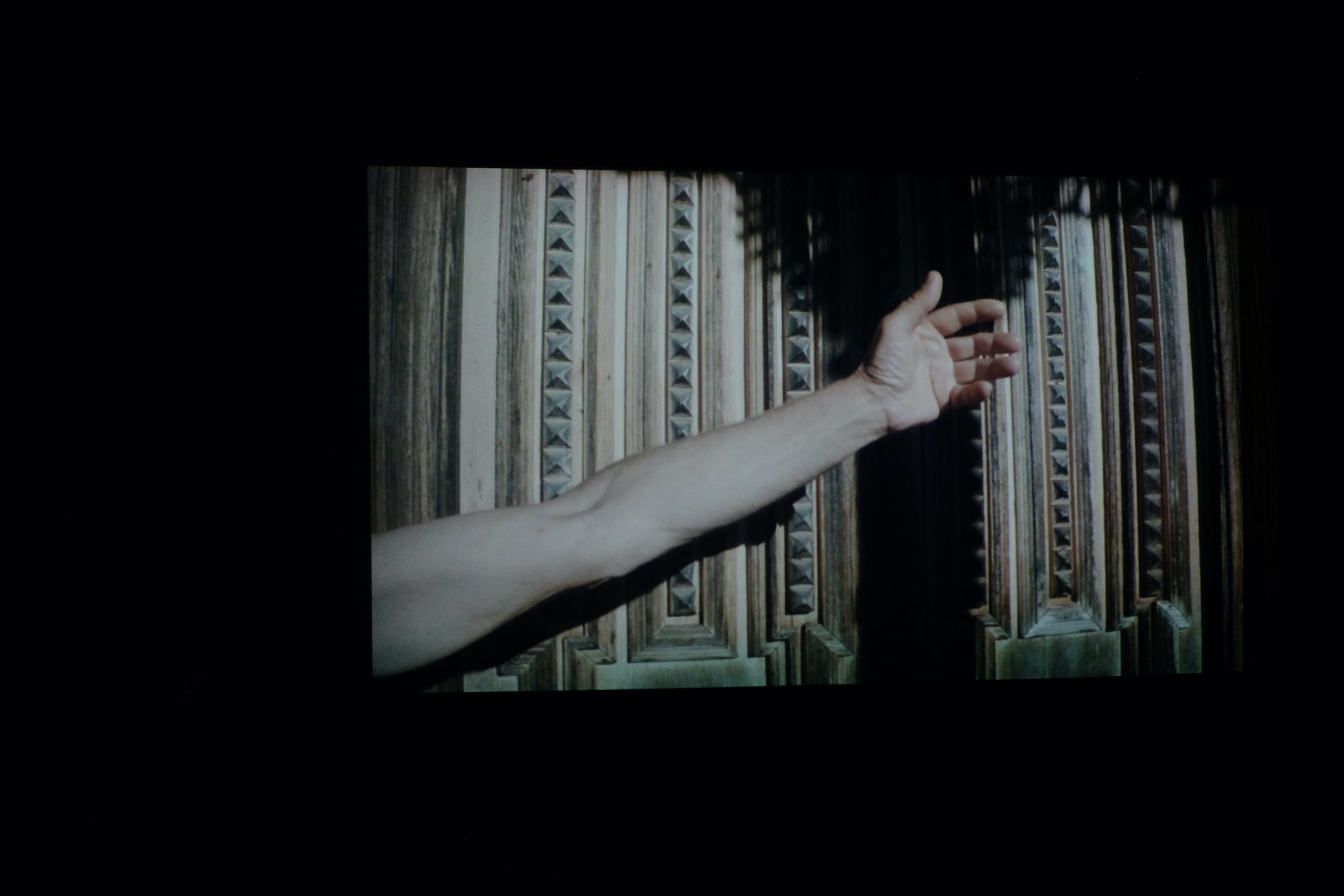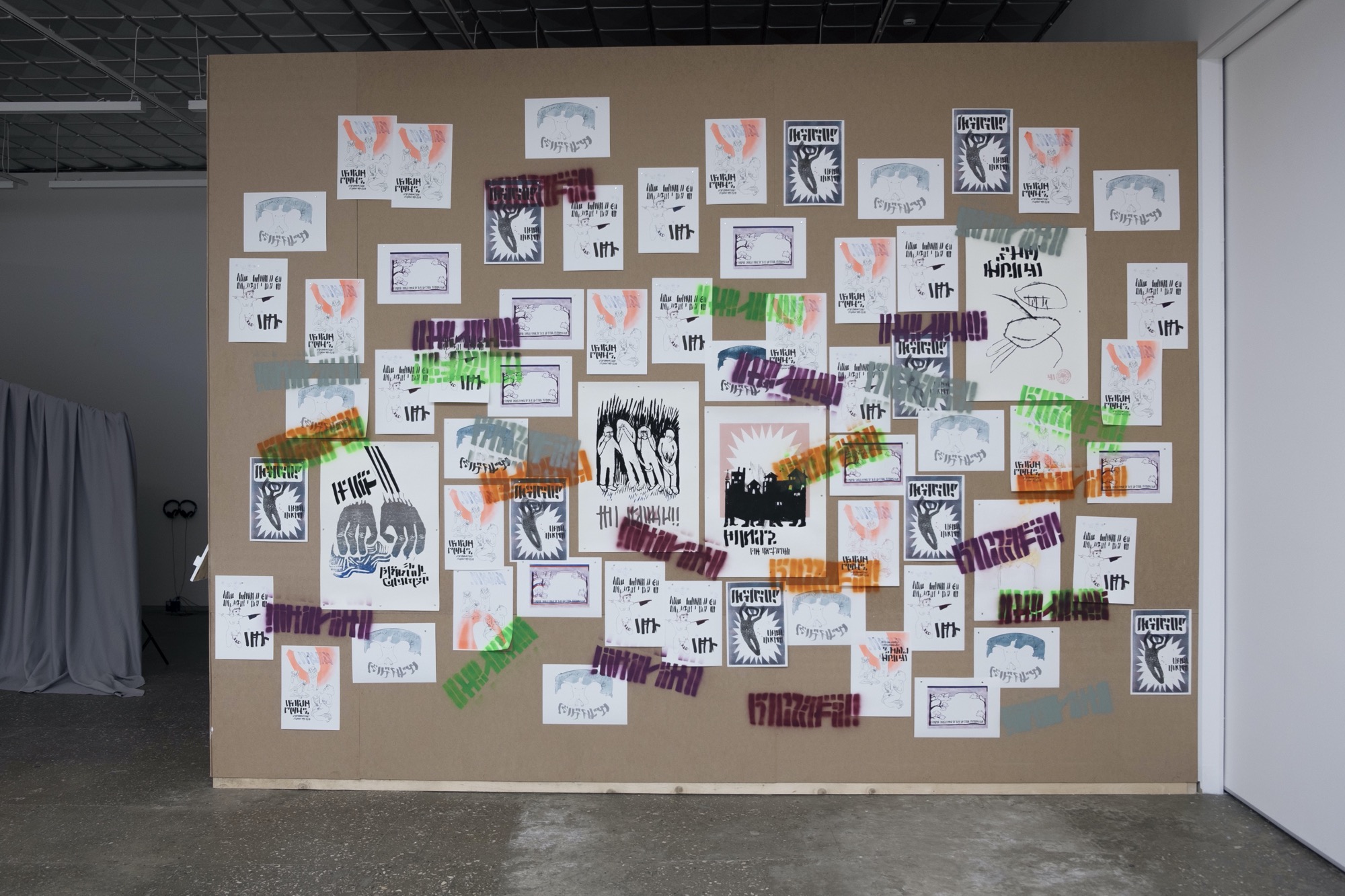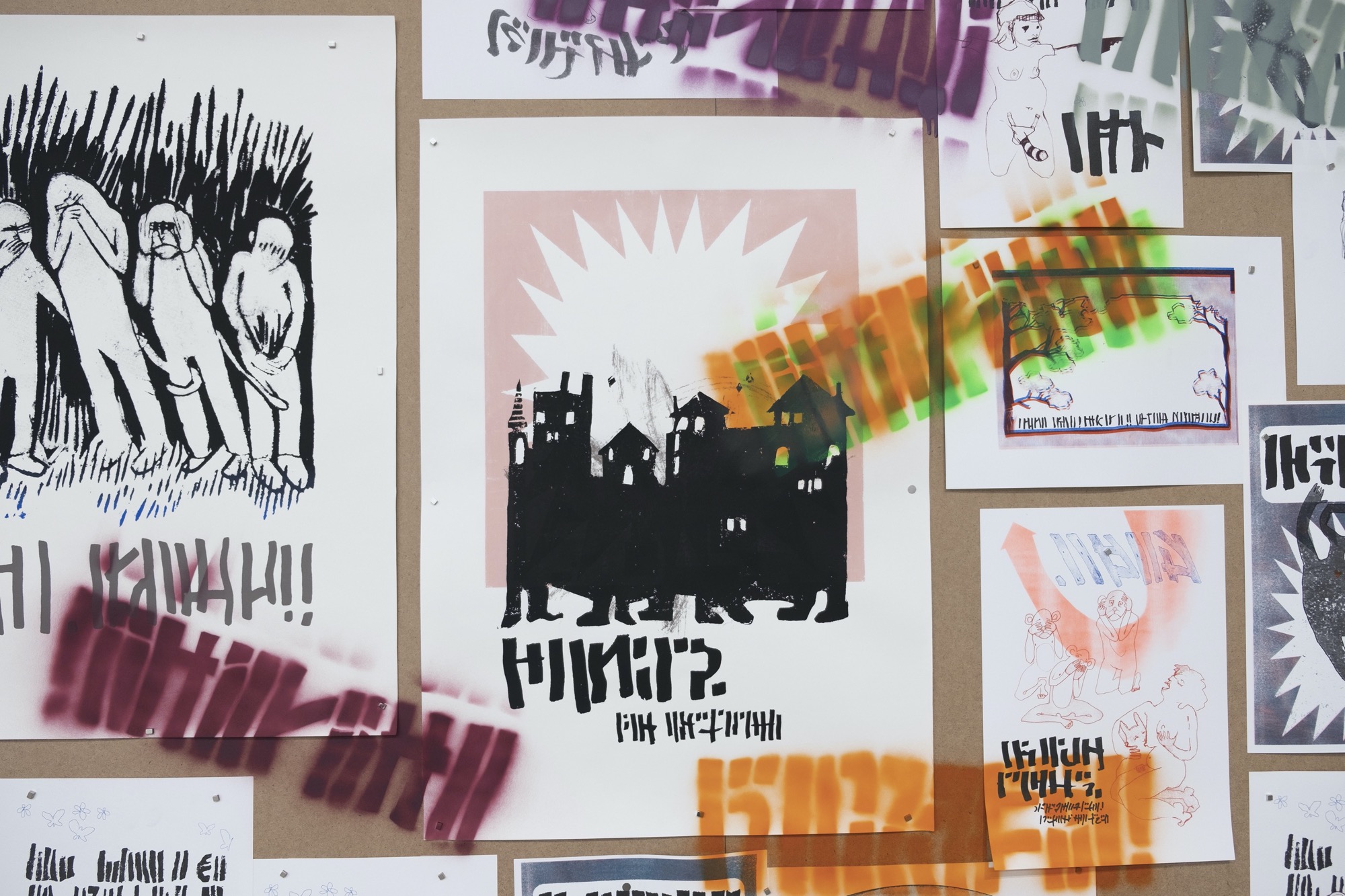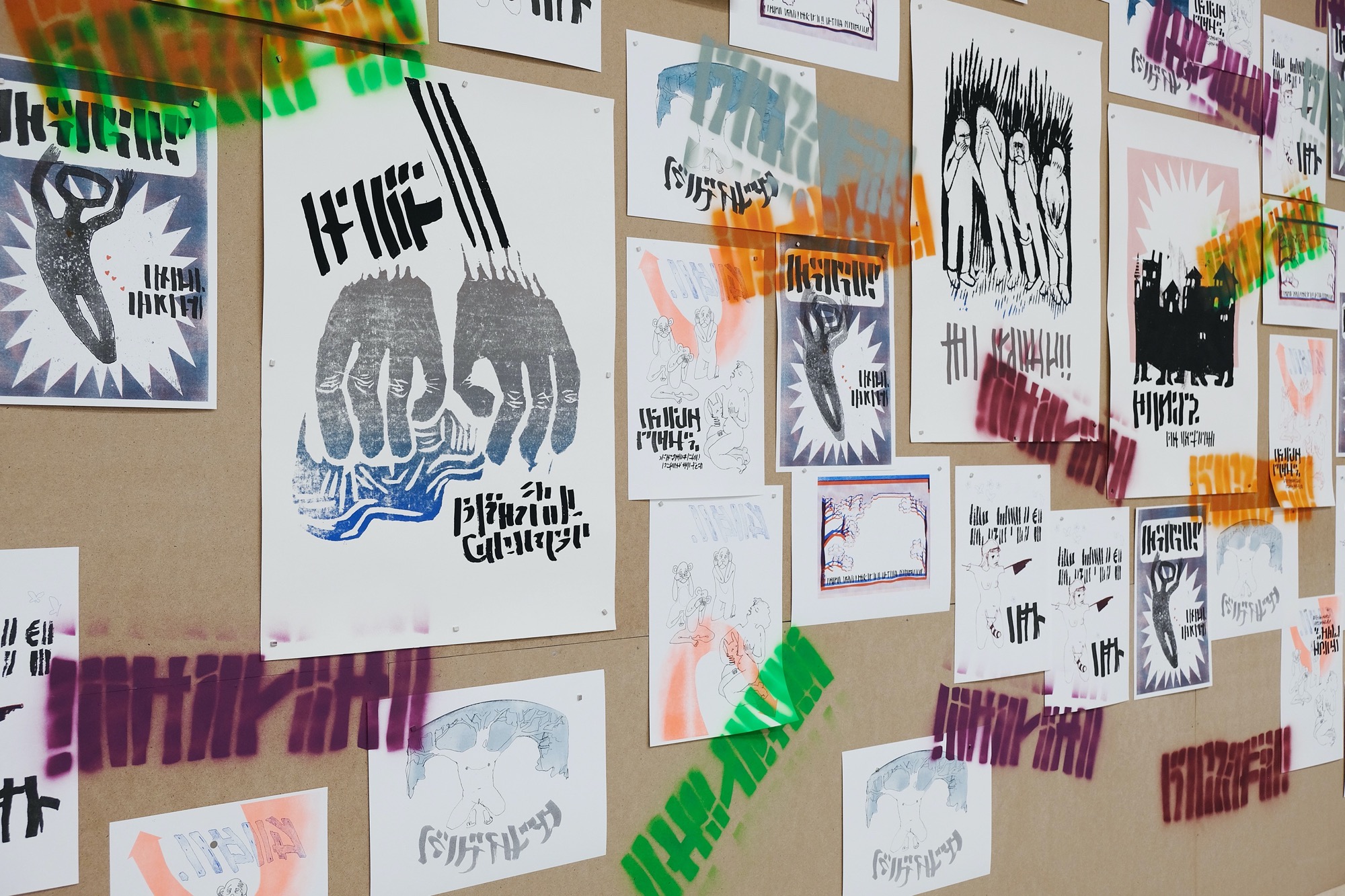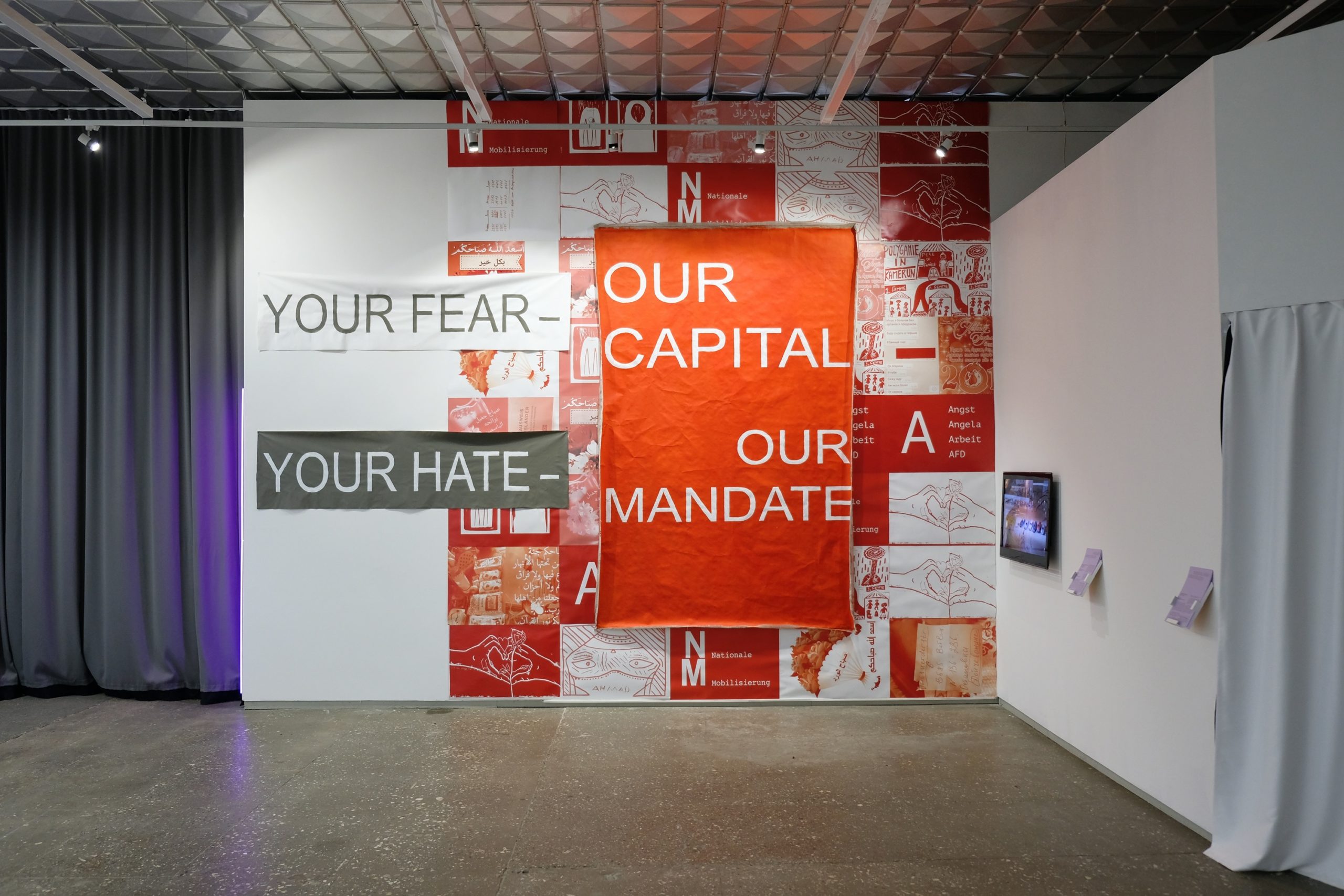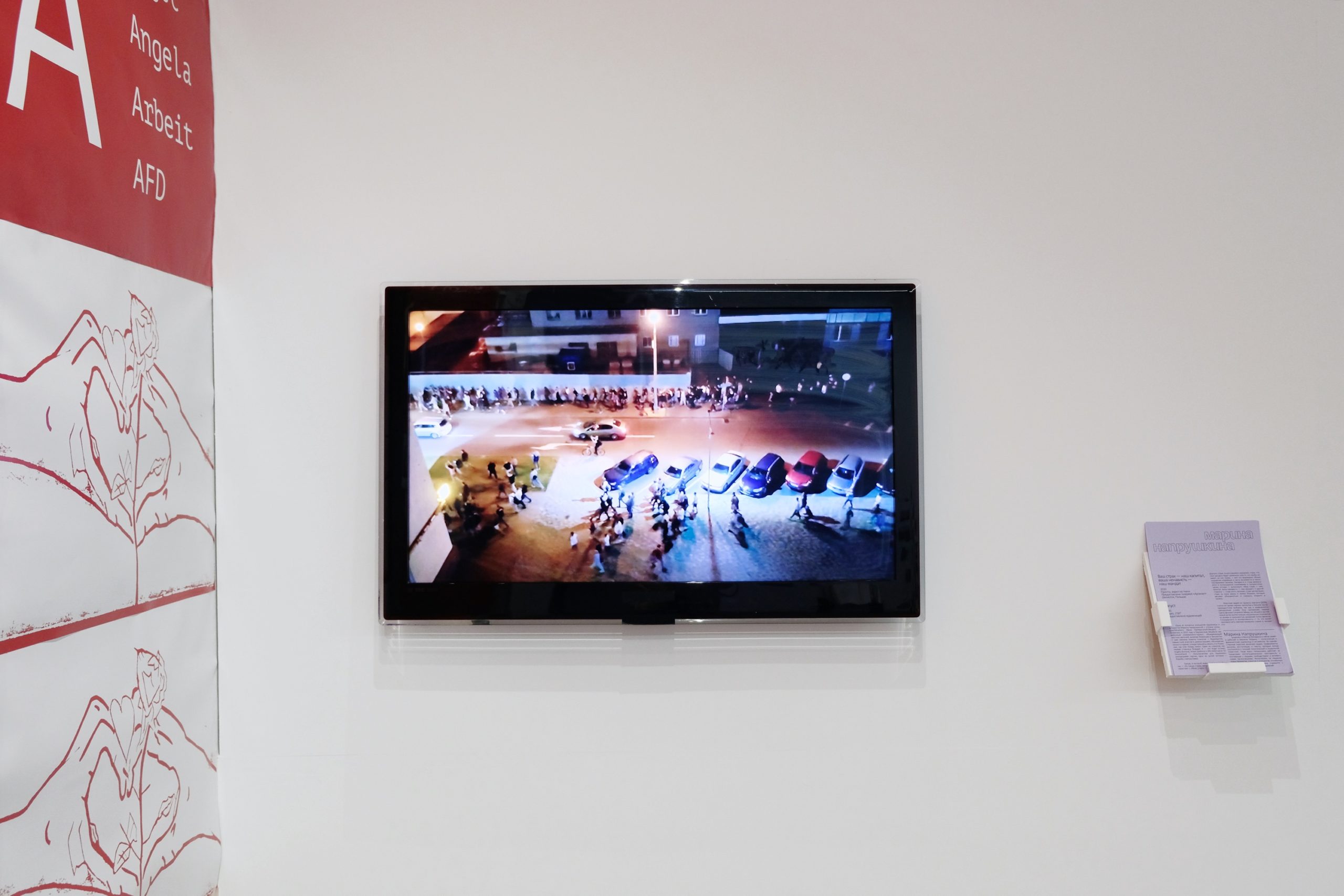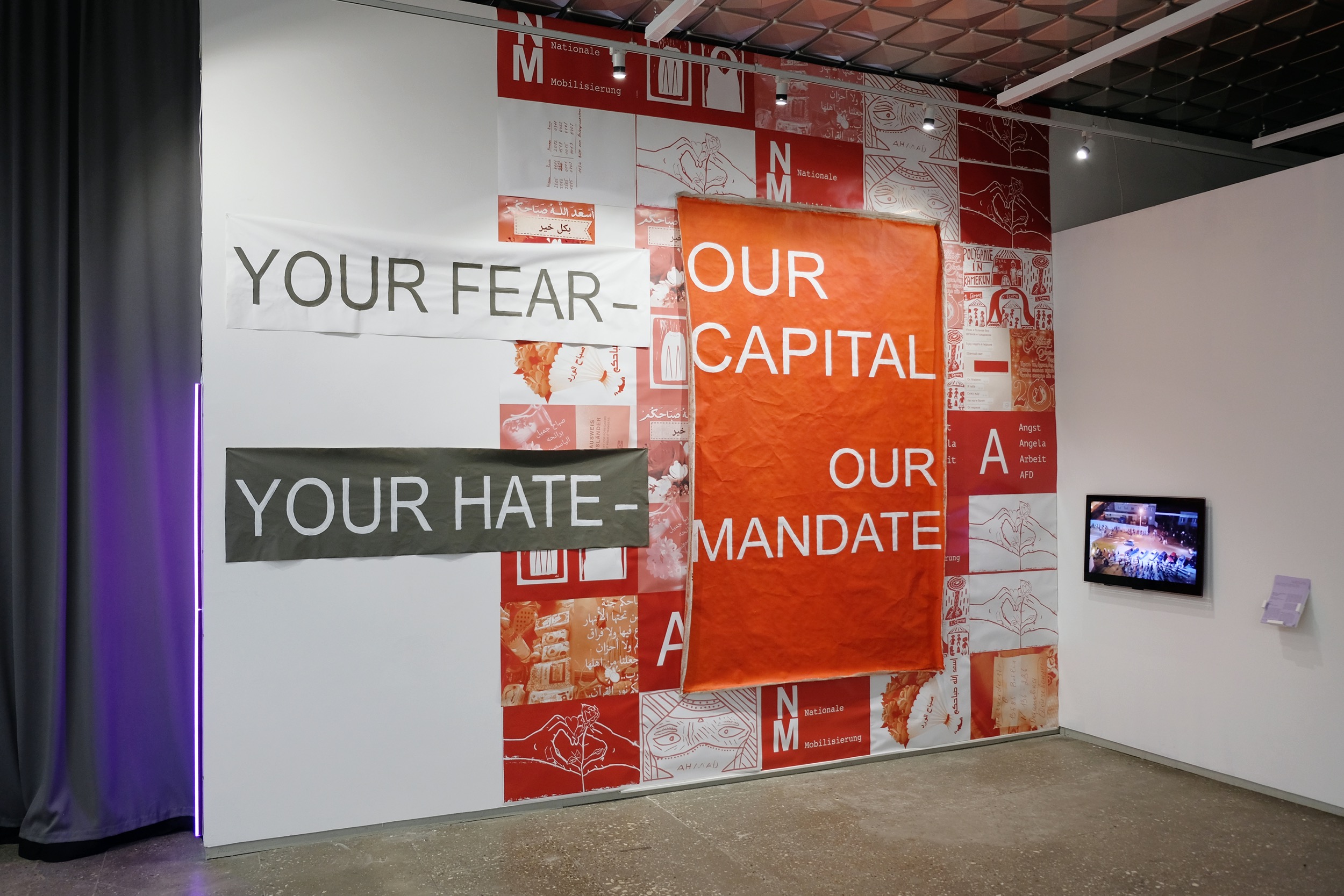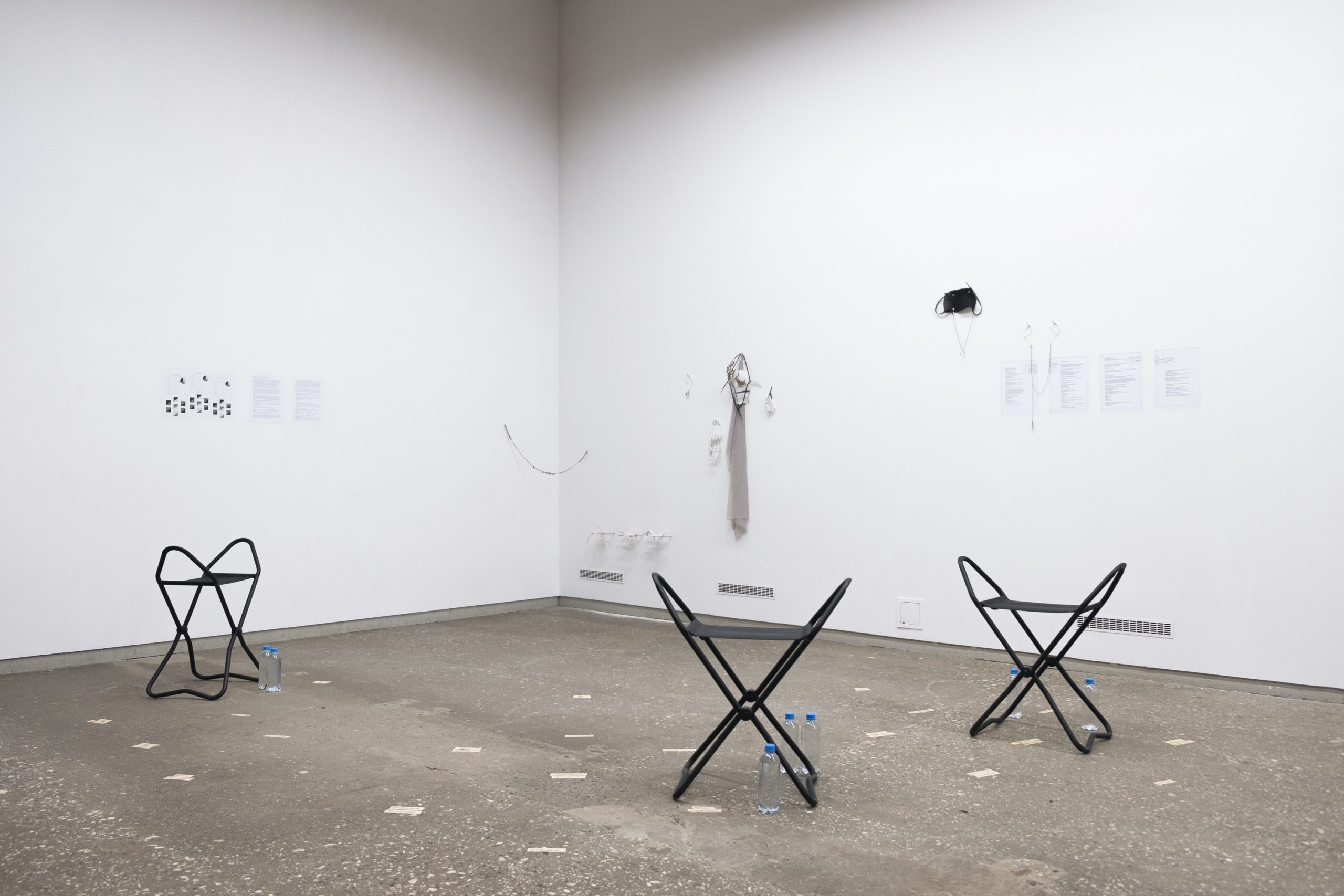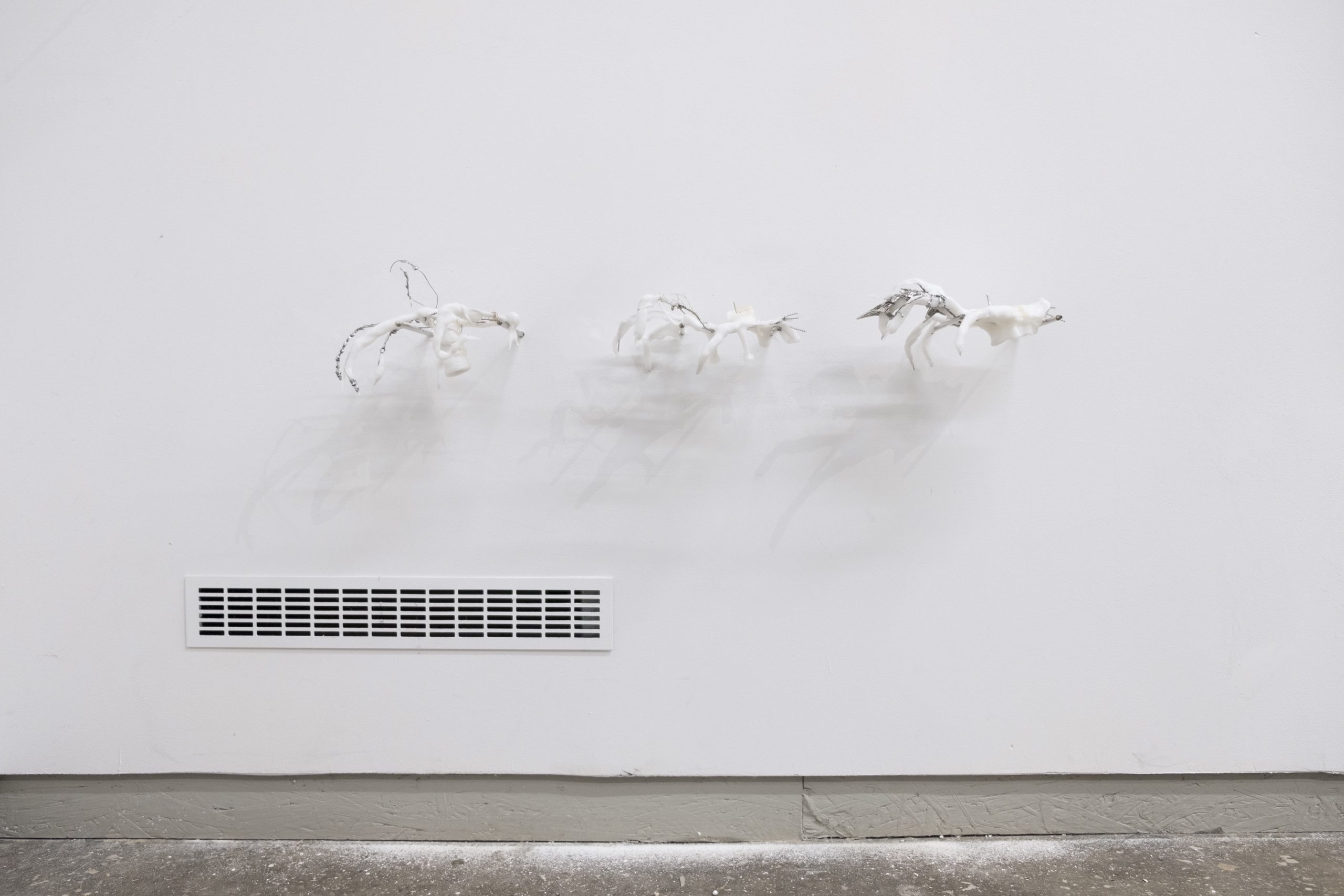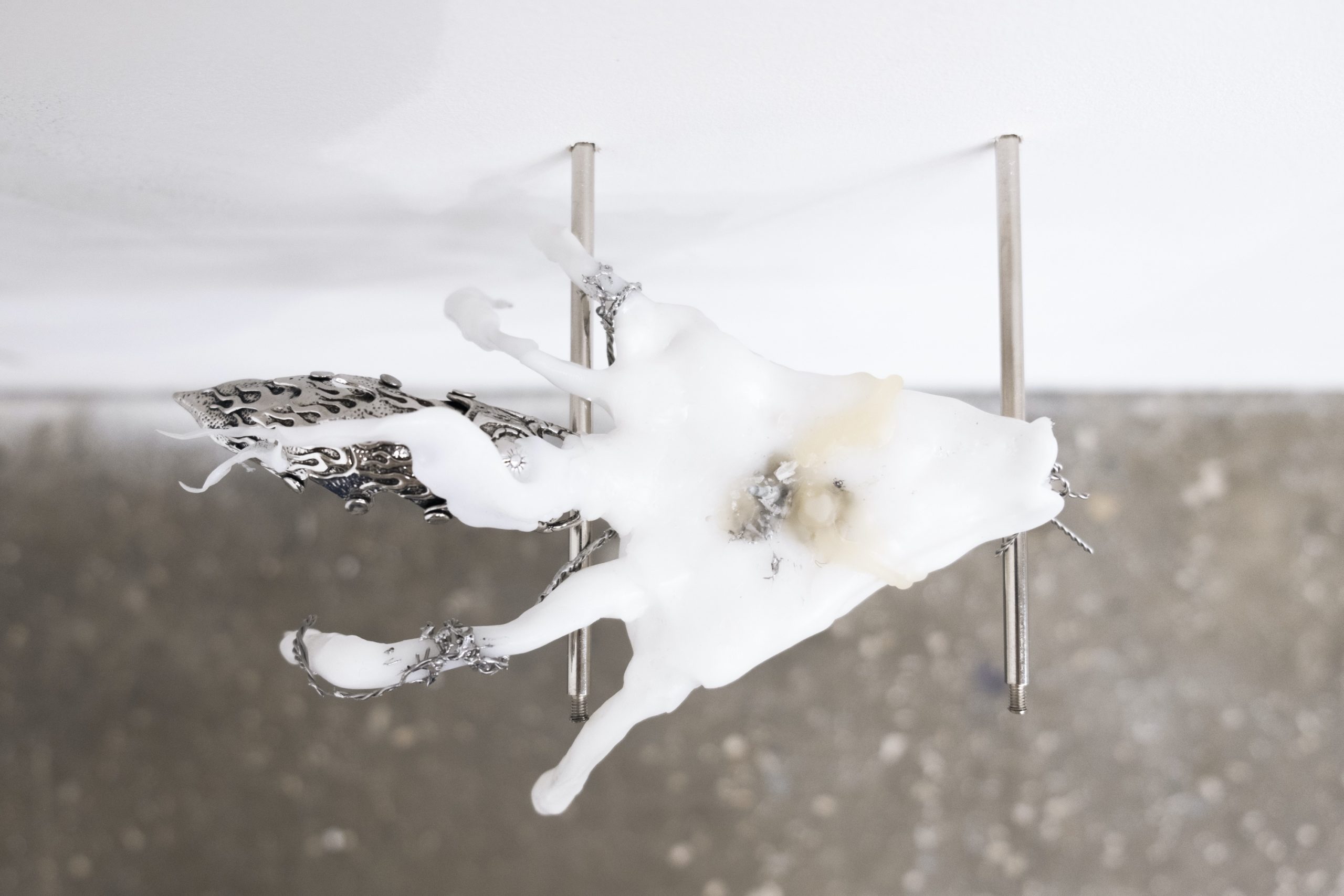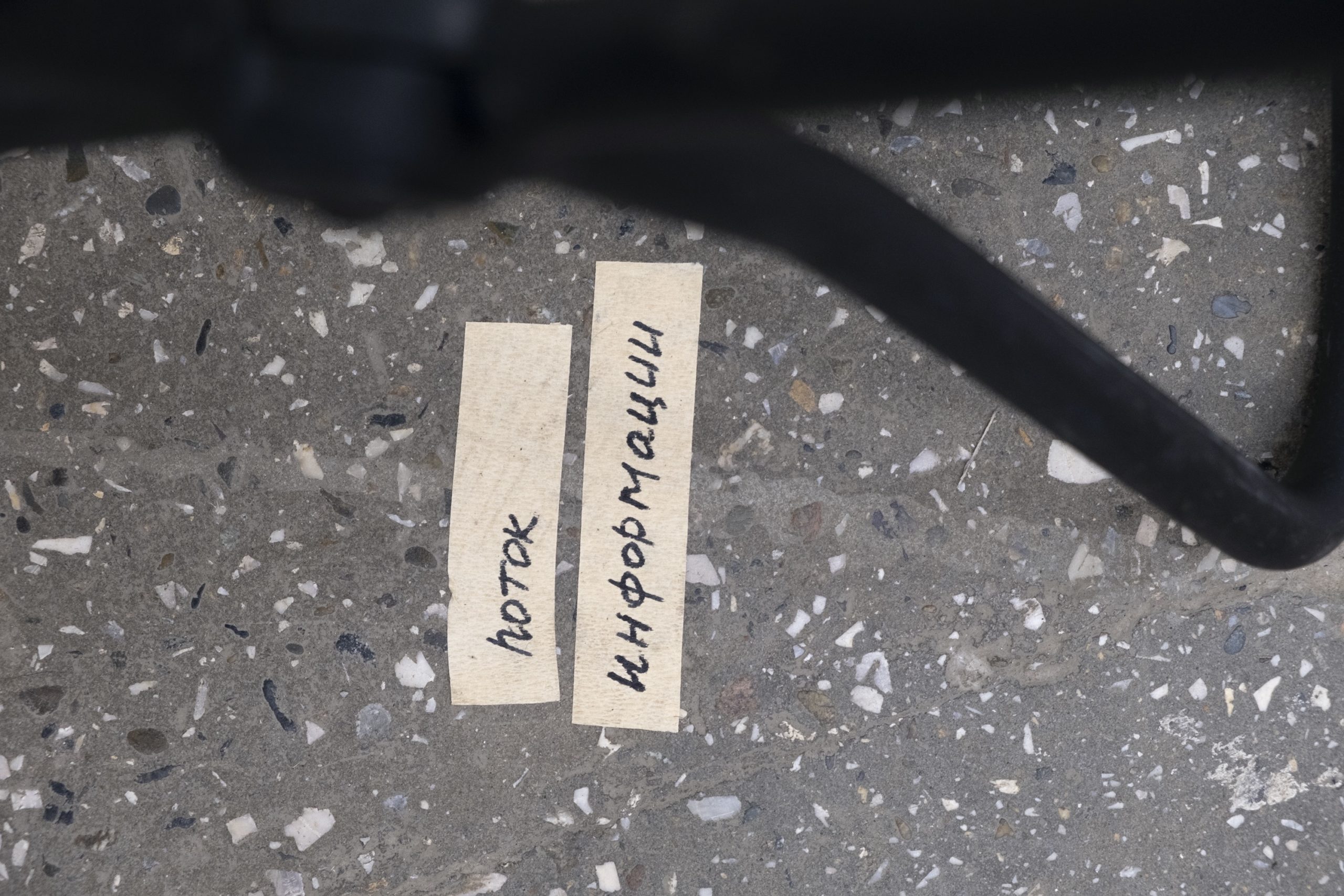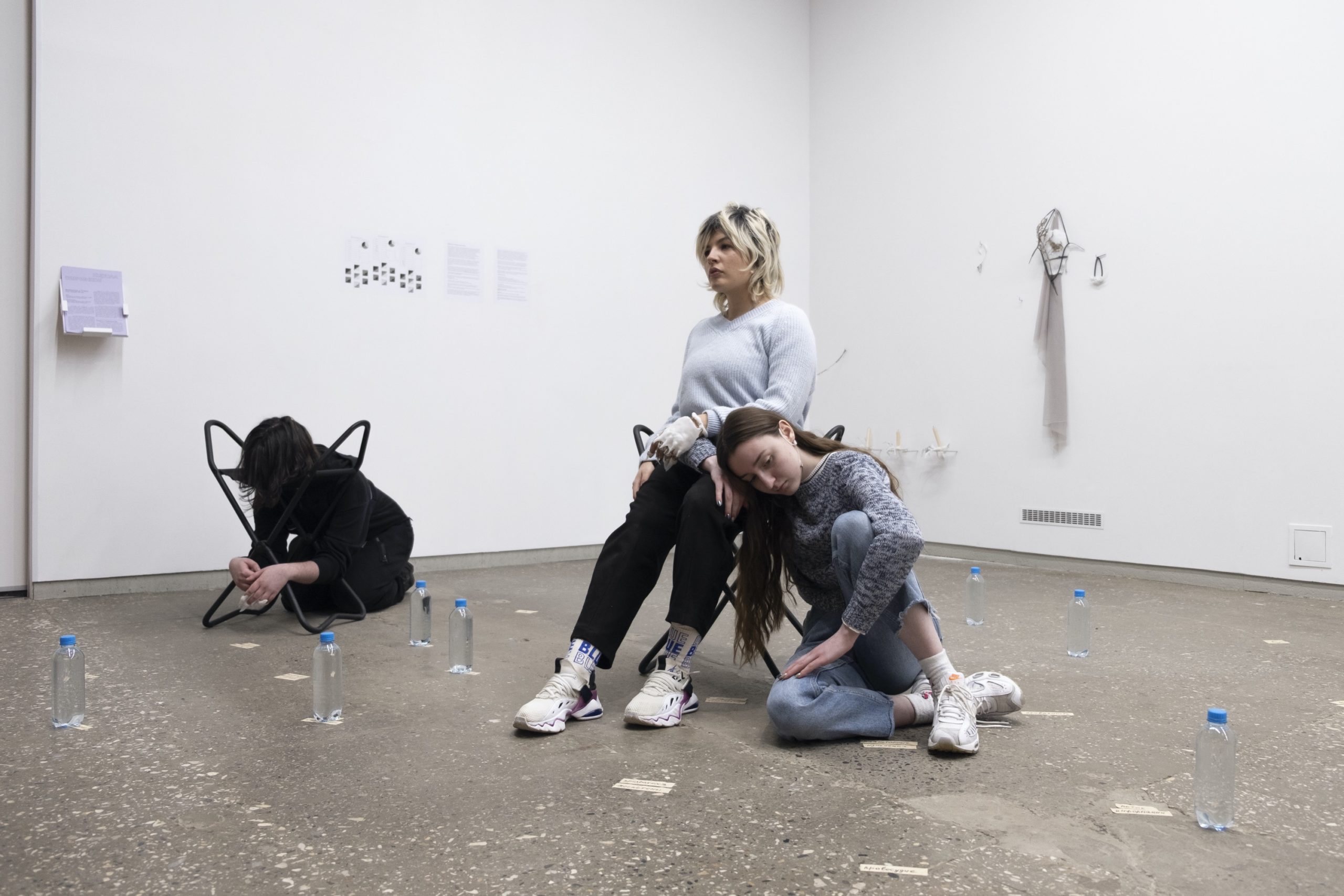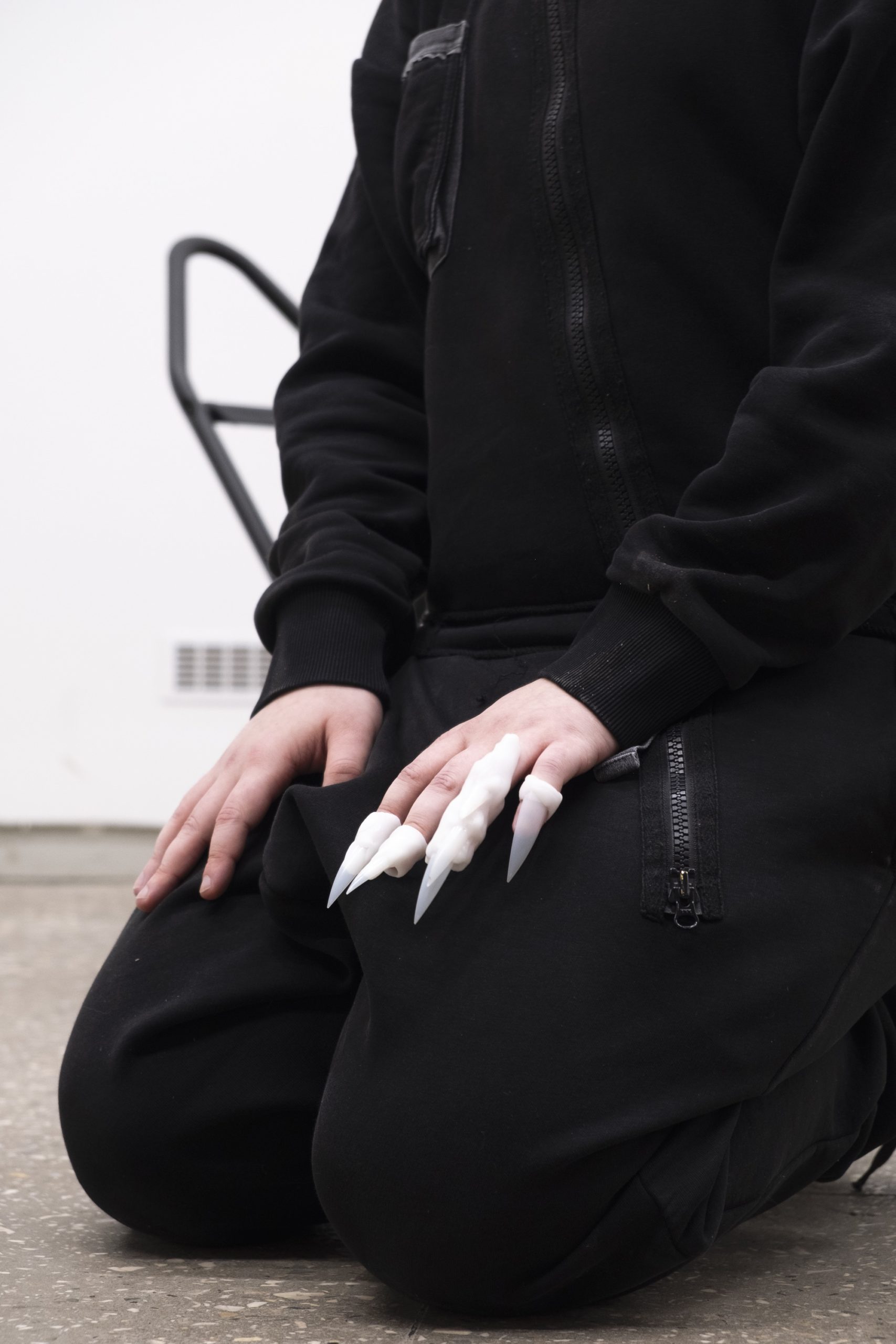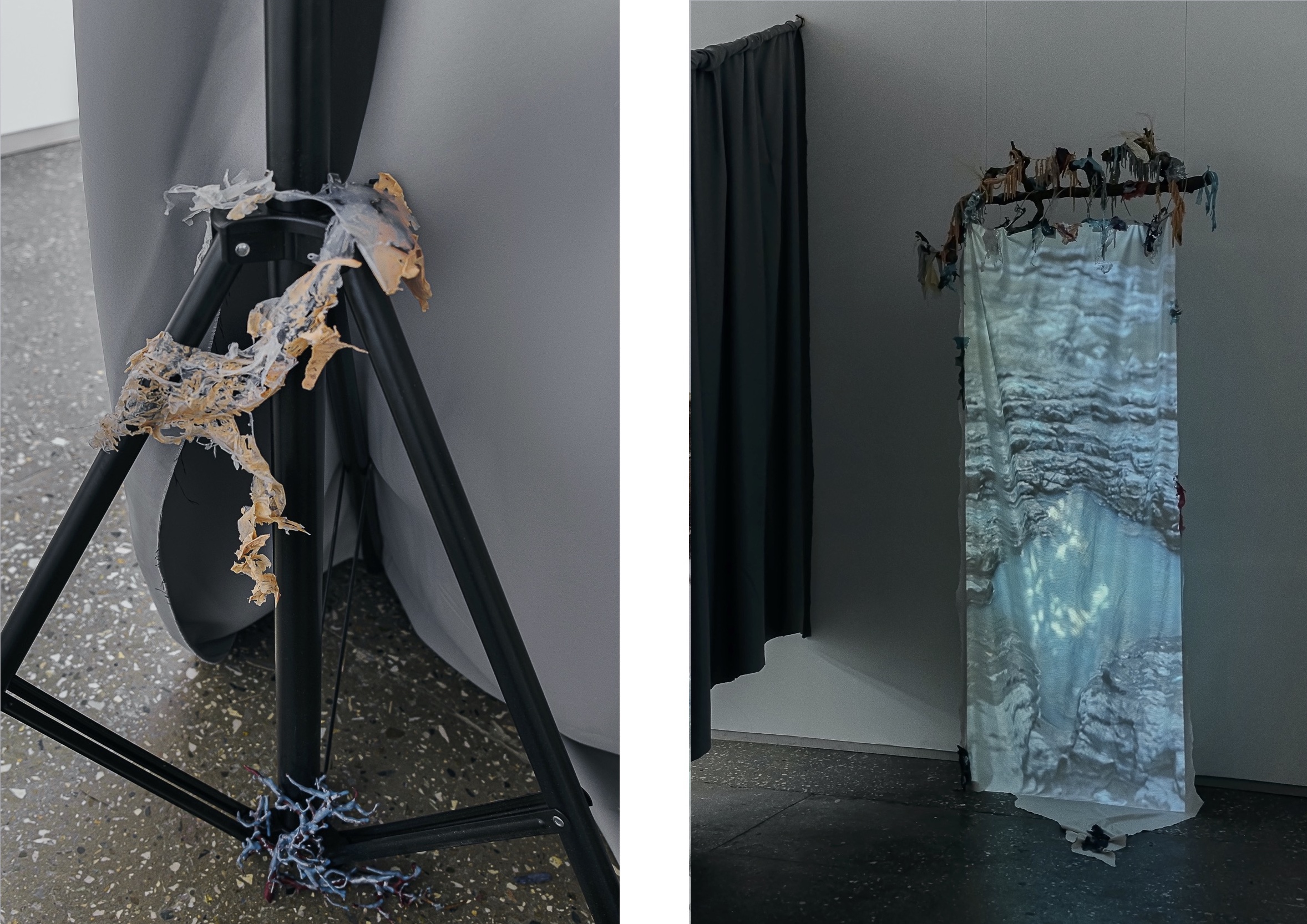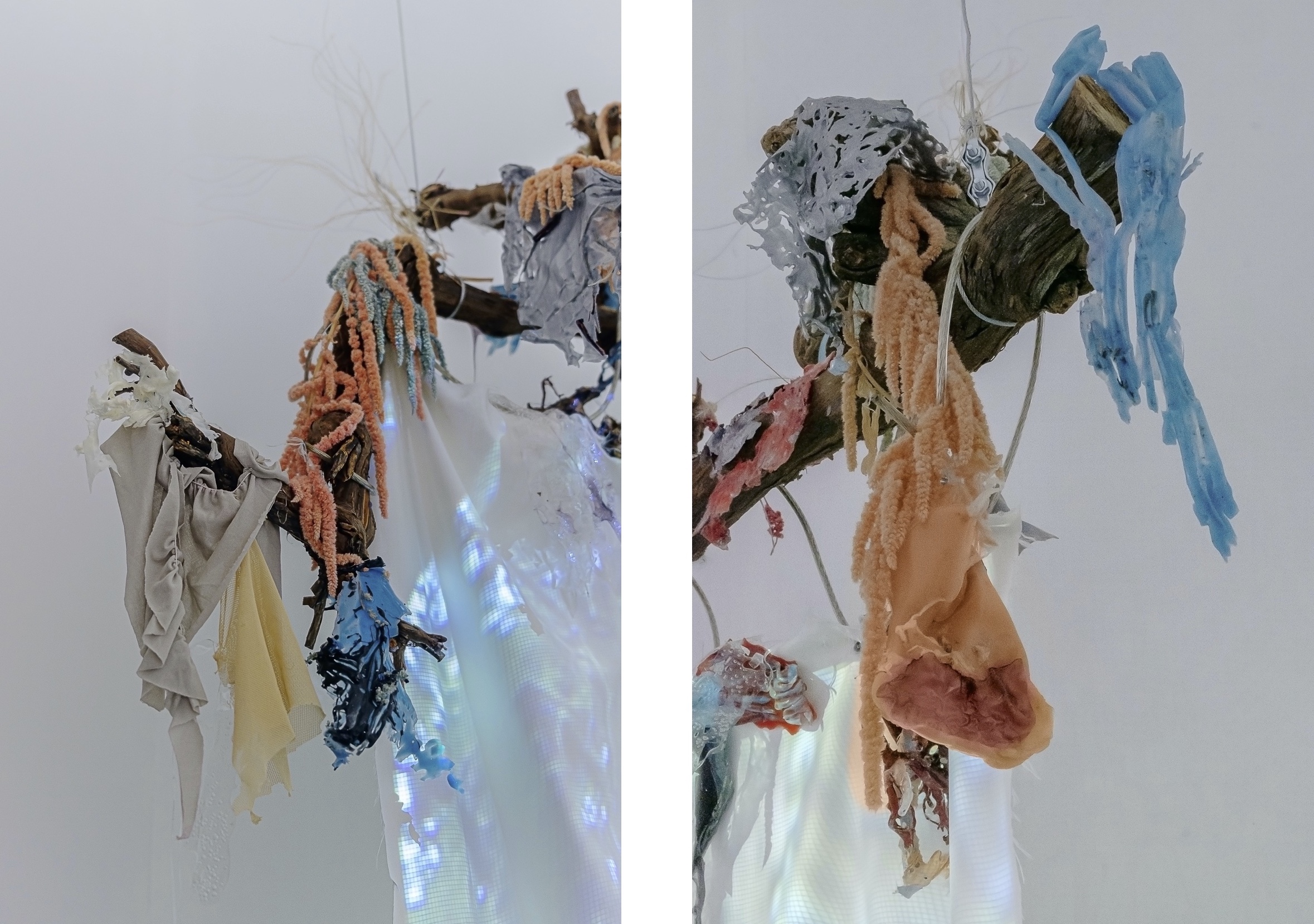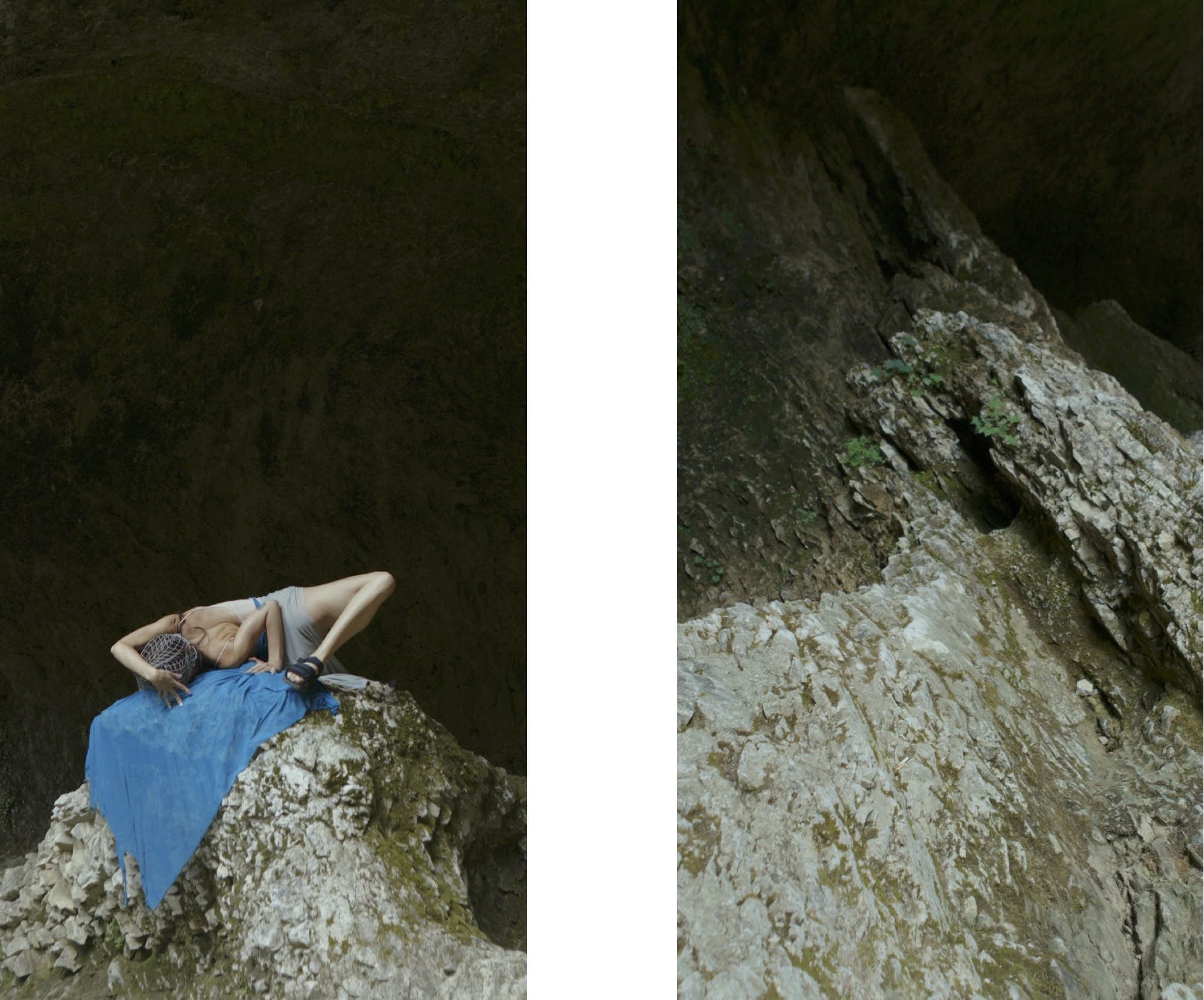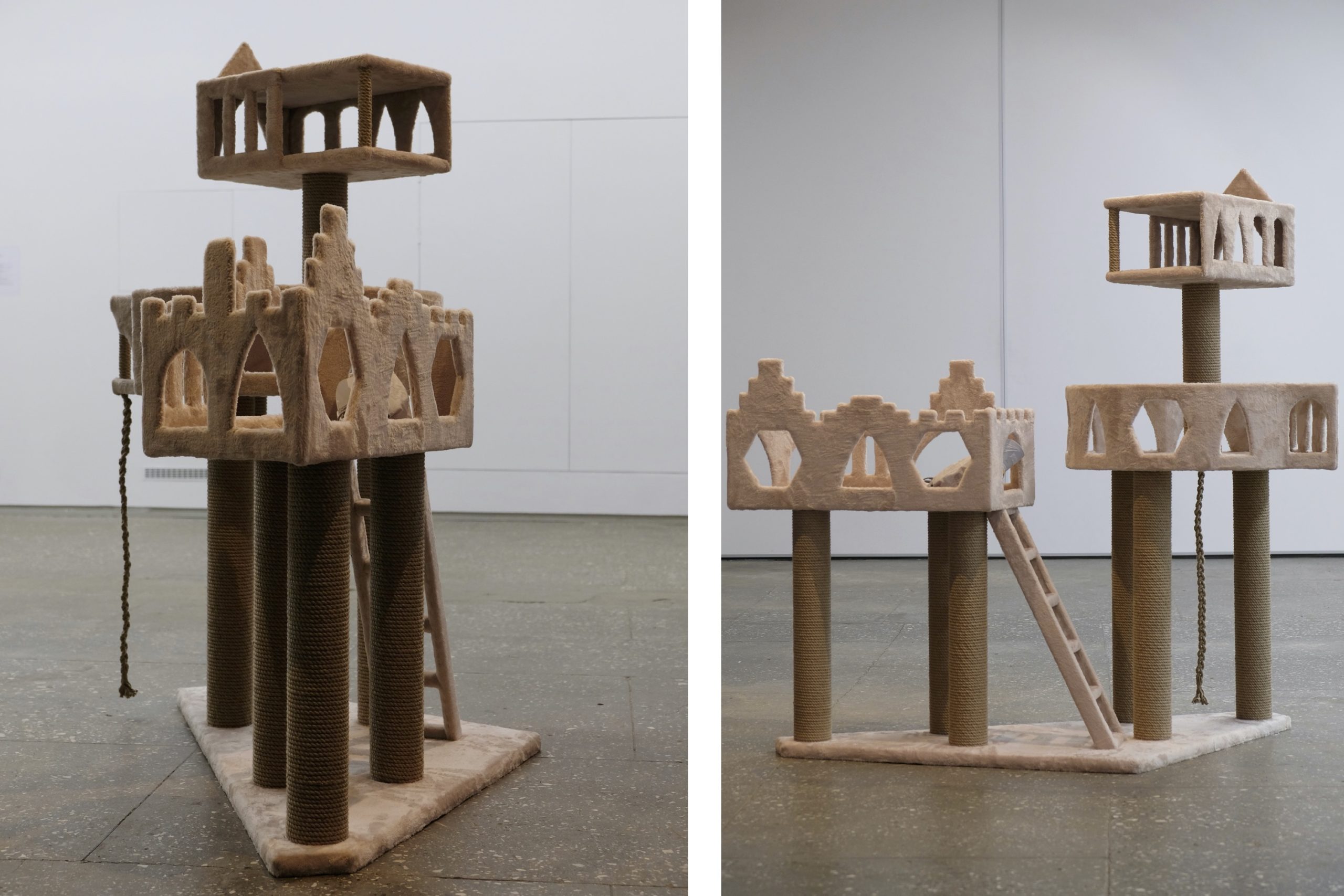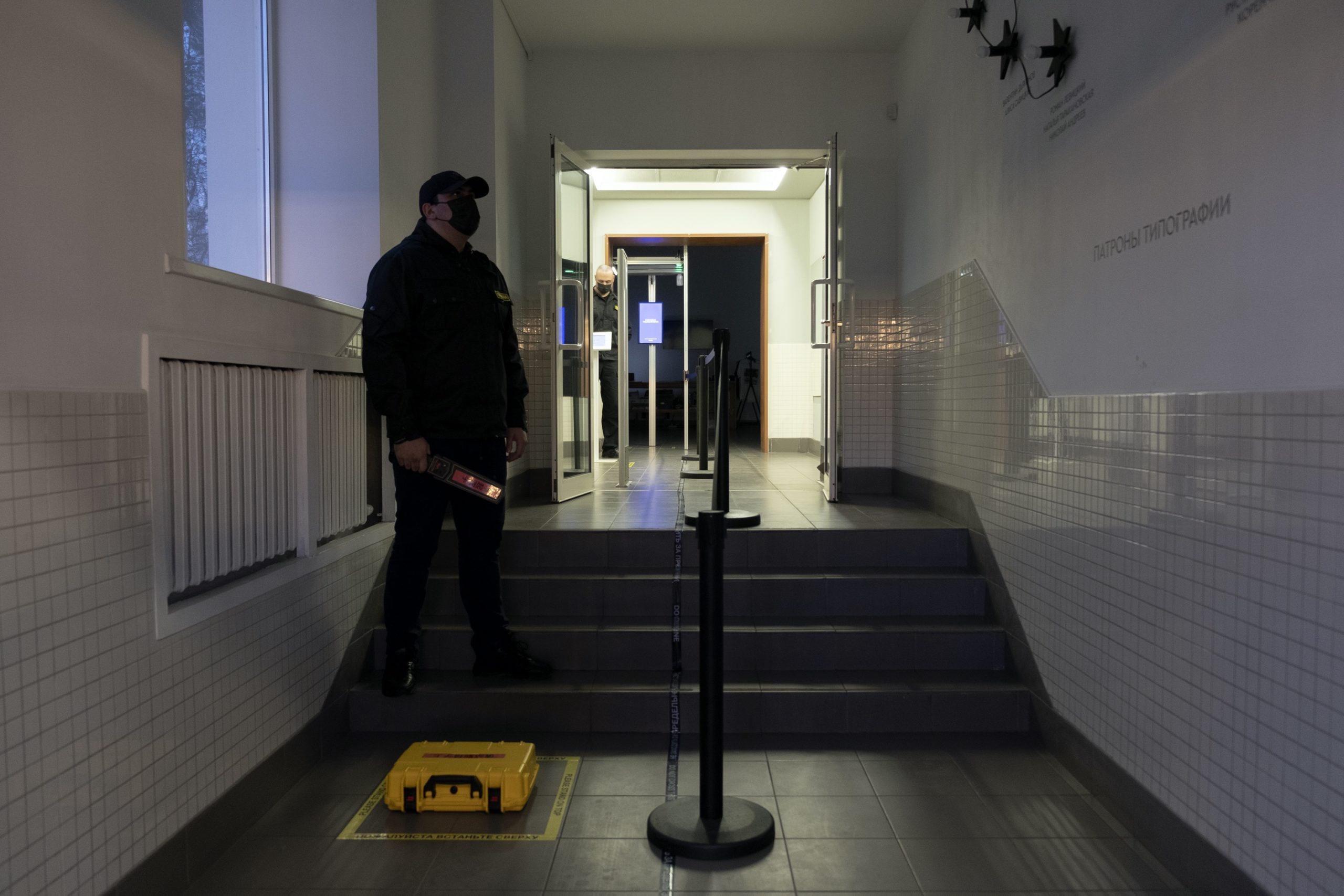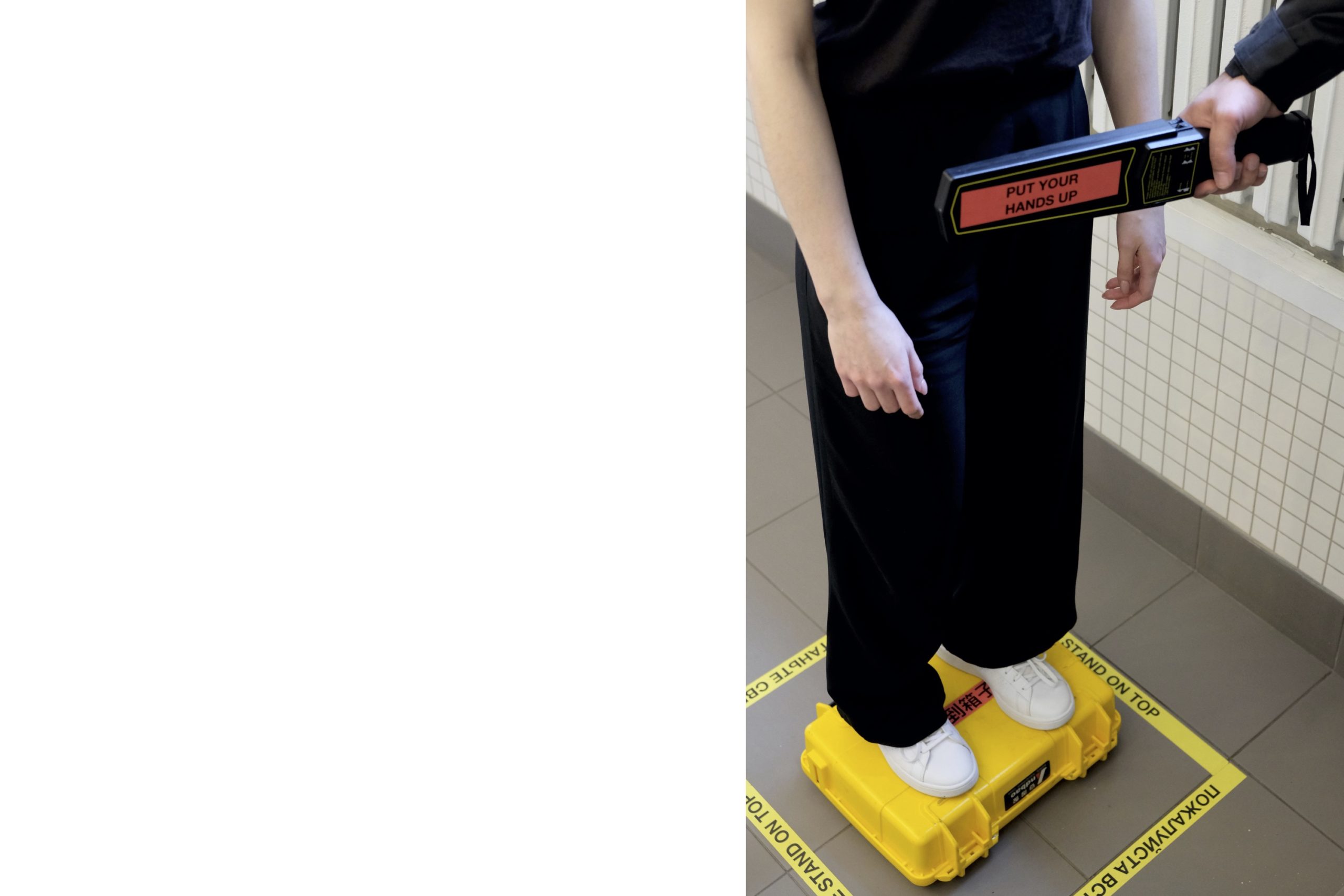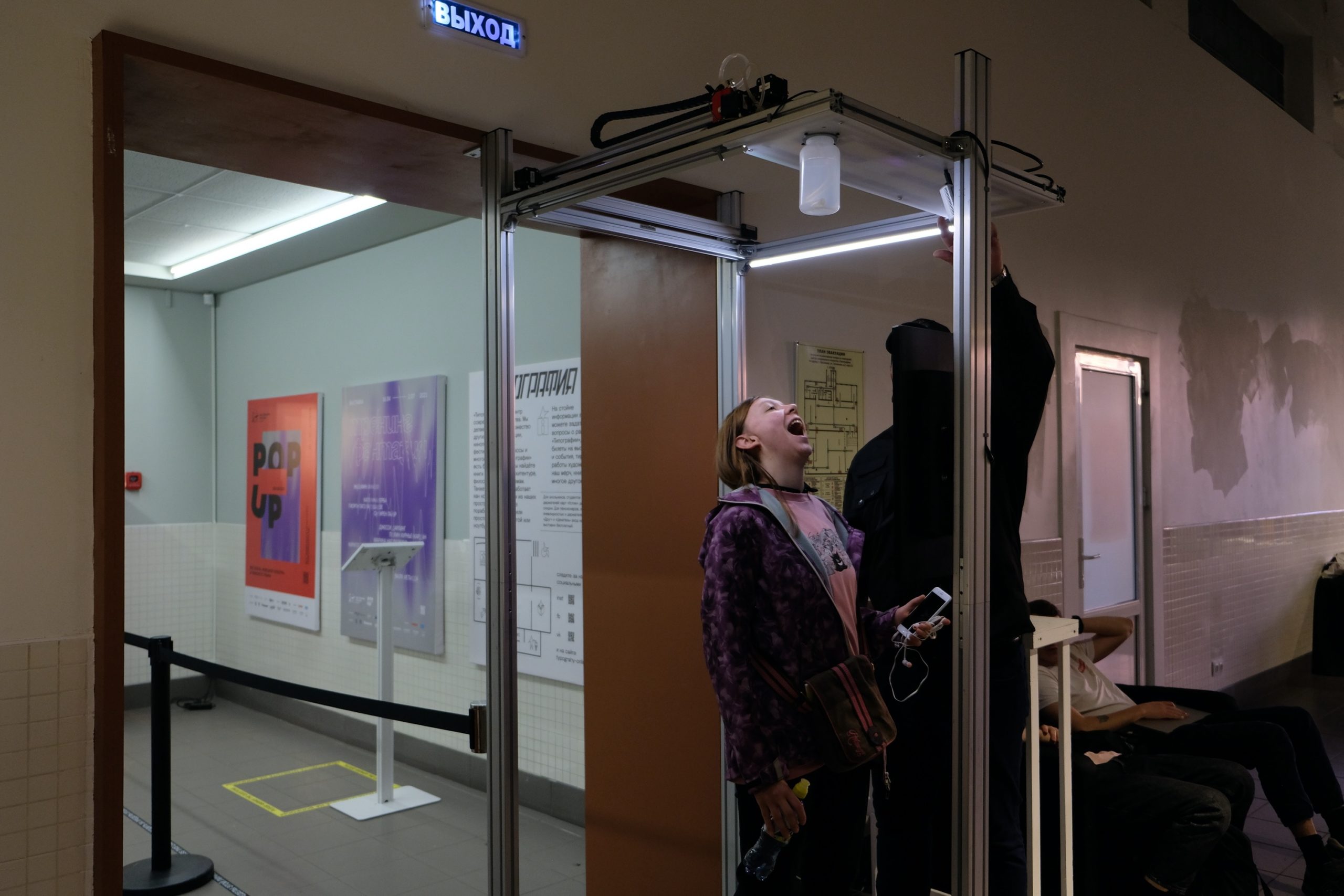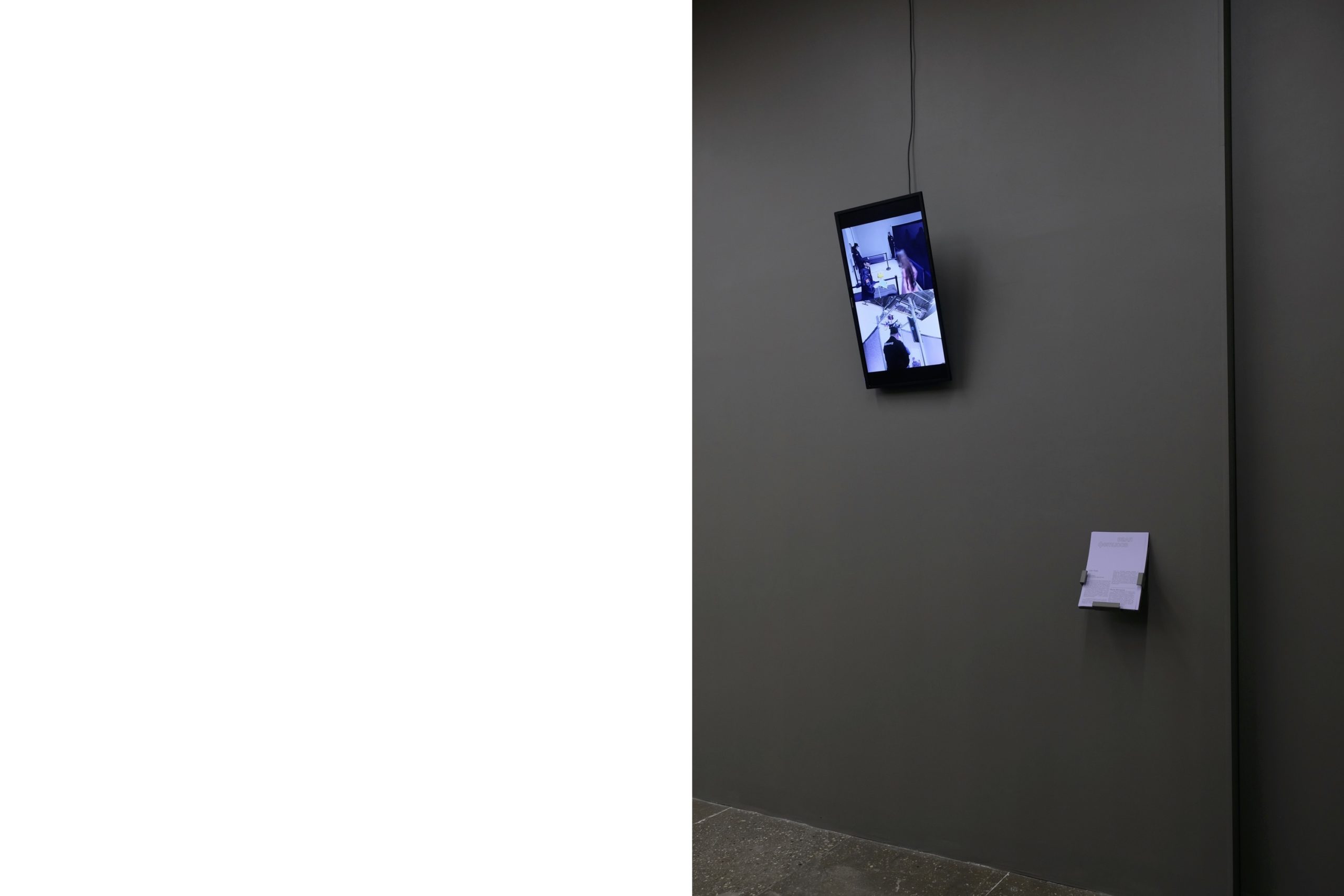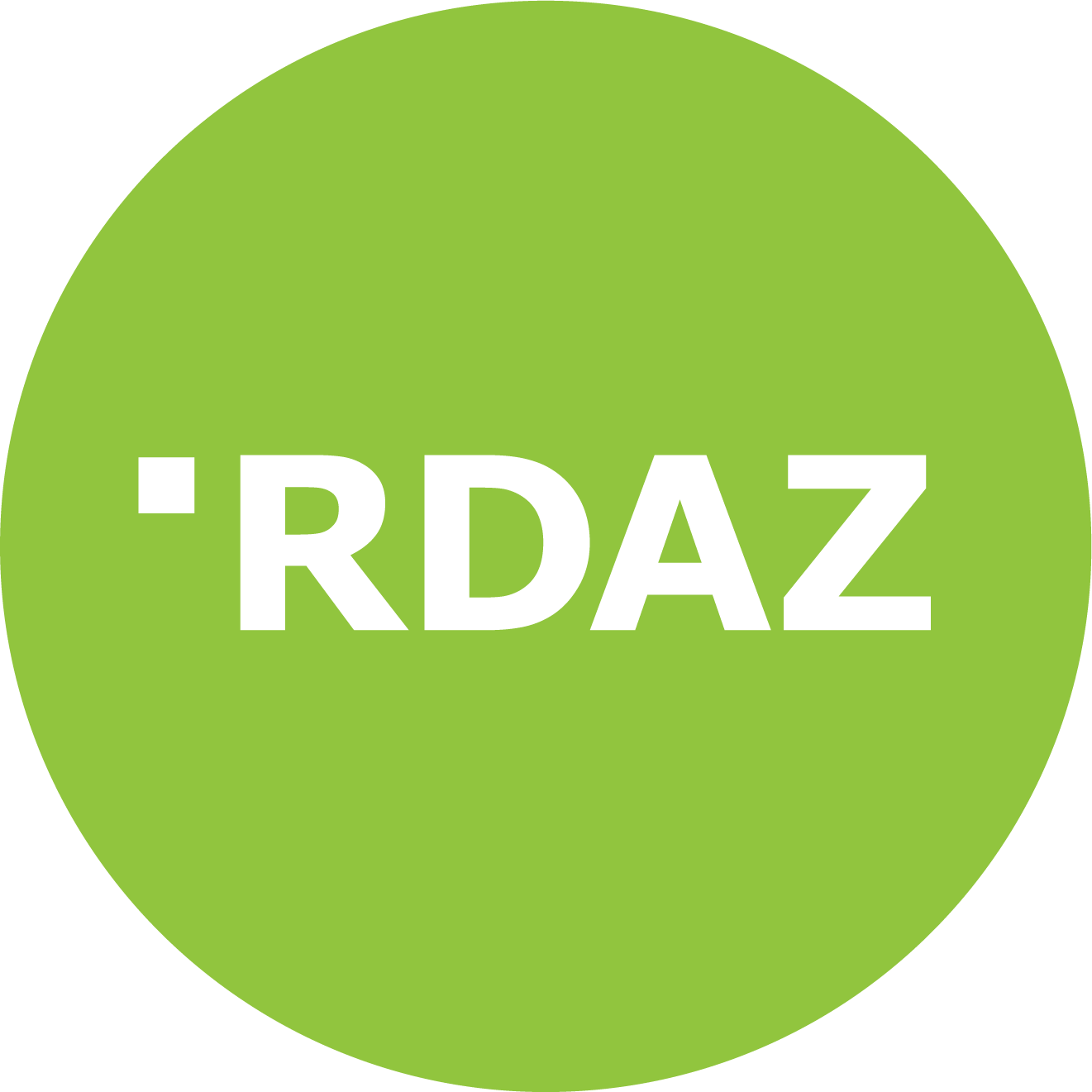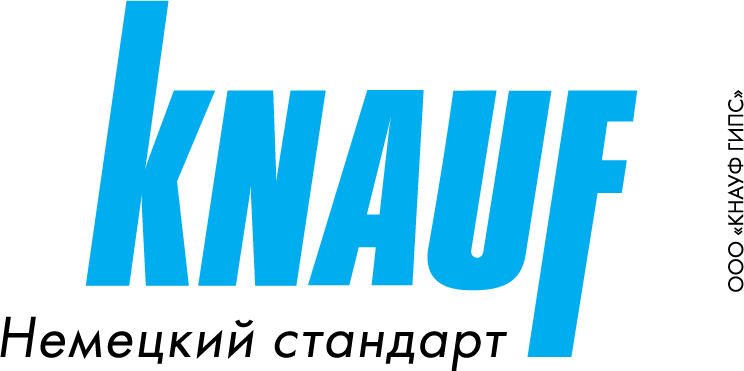Typography Center for Contemporary Art together with the Goethe-Institut Moscow present Training Fantasia exhibition — a part of special program and the Pop-Up-festival of German culture and the German language in Krasnodar within the framework of the Year of Germany in Russia 2020/21.
Participants: Josefin Arnell and Pauline Cournier Jardin, Jesse Darling, Valia Fetisov, Cyprien Gaillard, Giorgi Gago Gagoshidze, Marina Naprushkina, Kirill Savchenkov, Sofia Skidan, Aleksei Taruts, Katerina Verba
Curators: Elena Ishchenko and Marianna Kruchinski
The exhibition brings together 11 artworks created by artists from Germany, Russia and other countries. Each work comprehends the idea of the weird, supernatural and frightening, and also fantasizes about possible configurations of the present, future and past; surveillance and trust; political and corporeality; social and supernatural; technological and sensual.
Design: Anna Filatova
PR support: Anna Naumova, Nikita Sokol
Editing: Anna Litovskikh
Technical support: Misha Kurilov, Pavel Blokhin, Vasiliy Chernenkov (Garage MCA), DJ Studio
Exhibition installing: Stepan Subbotin, Vasily Subbotin, Evgeny Rimkevich, Misha Kurilov
Mediation: Ilya Borisov, Iolanta Dallada, Alexandra Dyomina, Daria Kucher, Dayana Svyatenko
Exhibition will be held from
April 17 till July 14.
12:00—21:00
Videotour (Russia & German): YouTube
Audiotour (Russian): SoundCloud
How do we define the experience formed from encounter with art? And how exactly is the experience of interacting with art different?
It’s odd – trying to answer this question within the framework of a small exhibition text. But one way or another, each Typography event becomes an opportunity to refer to it again and again.
Our everyday experience is based on a system of perceptions and values that develop throughout life. Based on this experience, we make decisions and judgments, we take actions, which are, as a rule, predetermined and inert: similar situations provoke similar reactions.
The experience derived from art is different from the experience of everyday life. This experience is guided by objects of art that can take on a wide variety of forms – sculpture, sound installations, performances, films, printed graphics, and so on.
These objects are inextricably linked with the experience of everyday life, but they are able to suspend the work of given patterns of perception. Works of art provoke a reassembling of personal, collective and historical experiences, calling them into question.
Referring to the lecture of philosopher and artist Patricia Reed, we can say that objects of art, by presenting something in a different way, stimulate imagination towards other configurations of the world and become conductors of possible (sensory) access to them. Art can participate in the construction of new conditions of experience that will resist adaptation to the rules of habitual logic.
But how can art actualize these possibilities?
Discussing the works that we included not only in the exhibition, but also in other blocks of the Training Fantasia program, we voiced the idea that new experience becomes possible when it comes from the point of instability and uncertainty – the point at which our usual logic of perception ceases to work. Such a point is – fear, feeling “not on my own”, arising from collision with something that we perceive as “alien”, “inexplicable”, “unseen”.
Speaking about fear and instability, philosopher Alla Mitrofanova singles out two possible logics for overcoming it. The conservative one is predetermined and adaptive: it presupposes the strengthening of hierarchies and control, the flourishing of conspiracy theories and the position of a suspecting subject, who is deprived of the possibility of [political] action, thinking that everything is predetermined in advance. Although the conservative approach presupposes the construction of non-existent worlds, it is based on existing hierarchies and proceeds from a given order of things.
The experience of fear and instability (amplified by pandemic) can become a source of non-adaptive logic that allows you to see / imagine the already existing world, history, ourselves, the collectivity in which we live and interact, our body in a new way – as something complex, unfinished and open.
In this exhibition, we tried to collect just such works – strange and provoking a feeling of uneasiness, exploring the boundaries of control and trust, reassembling the bodily, political and historical, technological and sensual, social and supernatural. They are made by artists working in different countries and in different contexts, with different mediums and materials. Their heroes are football fans and mermaids, cats and ghosts, refugees in Germany and Crimean Tatars, Red Fox and Ocean returning to their homes, lost body parts and felled cypresses. We hope that their (unexpected) meeting at the center of contemporary art in Krasnodar will become an experience that opens up the way for transformation.
Elena Ishchenko
Pictures courtesy Lilith Matevosyan
Participants:
Josefin Arnell & Pauline Cournier Jardin
Mudde’n’ Muddle explore environmental disaster
2018
Film 4’36”
Courtesy of the artists and Ellen de Bruijne Projects
The short film by two artists, Josefine Arnell and Pauline Cournier Jardin, resembles a trailer for an adventure drama: two mermaids find themselves in an amusement park and try to get used to conditions so similar to, but so different from their habitat. Space, which many perceive as one for rest and recreation, becomes a world after an ecological disaster in their eyes: greenery, water and sand — surrounded by plastic in a water park reservation.
The mermaids are played by the artists themselves. Their tails are deliberately visually artificial and can even be easily removed while playing in the water, exposing a completely human body; makeup is smudged from tears. Their actions are ridiculous, their figures against the plastic water park background recall mass culture images, rather than myths or mystical legends — Barbie mermaids and American cartoons. The usual plots and images mix and turn into a carnival, a transgressive joke — fantasy of metamorphoses and mutations, mobile identity. Here, an ecological catastrophe is not just a plastic world imitating a beach and recreation areas, but a world where this identity is strictly fixed.
Josefin Arnell is an artist and filmmaker based in Amsterdam. Through autobiographical exorcisms, Josefin Arnell mixes the semi-fictional with the fictional, drawing from personal experiences, fascinations and preoccupations to trace a non-linear imaginary of narrative connections, creating films, installations, drawings, etc. Her practice speaks of birth and fear, of human needs and anxieties, of absorption and rejection. Josefin introduces the creature as a metaphor to disclose the many ways humans fail at living together on this planet, and to problematise how we abuse it, harass it, and make it sick – as a parasite or a toxic friend would: with an unquenchable thirst, slowly but relentlessly, in a persistent state of denial.
Pauline Curnier Jardin is an artist, filmmaker and performer, born in Marseilles, France, who lives and works in Amsterdam and Berlin. “Comic troopers, bearded women, tamers of the jumping bean: when interrogated about how I come to do art and what my artistic motivation is, my mind wanders to the fair and the carnival, to a freak show of characters, a gallery of species, substances and stories. I am a thwarted anthropologist, a wanna-be witch, a profane devotee, a poet and a butcher”, says Pauline about her practice in which she explores expanded forms of narratives—such as an optic-opera, an ethnographic-peep-show, and some movie-performances.
Katerina Verba
Cypress Rehabilitation
2021
Cypress beams, sprouts and cypress seeds, video, photos, archival materials
Courtesy of the artist
Several years ago, the family of Katerina Verba bought a house in Crimea where her ancestors, Crimean Tatars, lived until 1944. The history of this ethnic group is a rather unspoken and complex one: in 1944 they were deported, in 1967 the sanctions were lifted, but the de facto ban on returning to Crimea remained until 1989. The inability to return home and the situation of tacit condemnation, which continued until the collapse of the Soviet Union (and, perhaps, partially exist even now), influenced the dissolution of identity: it was unsafe to speak of oneself as Crimean Tatar, Crimean Tatar names were replaced with Russian analogues, studying Crimean Tatar language outside families became impossible. It provoked a paradoxical situation when the Crimean Tatars became Others to themselves.
Turning to the history of her own family and the whole people, Katerina raises the question of how a group of people, excluded on the basis of ethnic and territorial characteristics, can be forced to the resettling which they cannot resist. She turns to a related story — the felling of cypress trees, which swept Crimea in the 1950s by strange desire of Joseph Stalin, who considered them either a bourgeois luxury, or graveyard trees, or places where snipers could hide.
Katerina’s grandfather, who had never been able to return home, used to dream of taking one more look at the cypress beam ceiling before his death. Now these beams are restored, and inside of them are sprouting cypress seeds, collected by Katerina in Crimea. After the exhibition, she will set them out towards the oaks, which in 1982 Joseph Beuys began to plant in Kassel (Germany) towards Russia. One of the main artists of the second half of the 20th century, he was a Luftwaffe pilot and had been shot down on March 16, 1944 by Soviet troops over the Crimean Tatar territory. Later Beuys mystified this event, stating that it changed his life, and the folk practices and materials of the Crimean Tatars that allegedly cured the young German soldier — felt, ghee, milk — became the basis of his artistic practice.
Weaving in one work the personal and the political, the territorial and the natural, the ethnic and the supranational, Katerina shows how literally any phenomenon can become an object of political influence and the distribution of power. And on the contrary, how artistic practices make it possible to turn to history and see it as flexible, explore and express one’s own identity, come closer to healing trauma and caring for those who are bearing them.
Katerina Verba is an artist and curator based in Novorossiysk. She works with the questions of identities gender, national, ethnic, territorial, presenting her research and artistic practices in the form of installations and collective exhibitions.
Cyprien Gaillard
Desniansky Raion
2007
Video, colour, sound, 30’
Soundtrack: Koudlam
Courtesy of the artist and Sprüth Magers
Cyprien Gaillard’s film Desniansky Raion (2007) is compiled of self-shot and found footage of four European cities: a utopian and silent view of a modernist skyscraper in the center of Belgrade, a massive fight between football fans in St. Petersburg, video mapping on a crumbling building near Paris and the Desniansky district of Kiev. Gaillard’s uses video footage to deprive recognizable architecture and social phenomena from their historical context, thus achieving the effect of defamiliarization.
Gaillard uses video footage to deprive recognizable architecture and social phenomena of their historical context, thus achieving the defamiliarization effect. The space of the film is something very real and at the same time imbued with a sense of weirdness: people merging into an indistinguishable mass; the mesmerizing sight of flashes and flickers on dilapidated, abandoned social housing; a huge residential area without a single person, resembling Stonehenge in its structure.
The music, specially created for the film by the French musician Koudlam, reinforces and in many ways creates the narrative. Silence alternates with the unsettling acceleration of the rave. It ends abruptly, giving way to the sounds of helicopters, which fade into the dystopian soundtrack of 80s sci-fi movies.
All together creates the impression of a distant view of human civilization and recognizable situations and landscapes as its artifacts. The space of the film is a weird world — a world after a catastrophe.
Cyprien Gaillard works with video, films, photography, installations, sculpture and photography. His artistic practice is closely related to visual archeology — images of the destruction of physical objects and the erosion of their social meaning. In his works, that often refer to ruins as the future of architecture and the idea of repeating time, he embraces a poetry of entropy that rearranges history to shed new light on the present.
Gaillard lives and works in Berlin.
Giorgi Gago Gagoshidze
The Invisible Hand of My Father
2018
Film, 24’02”
Courtesy of the artist
The story in the film by Giogri Gago Gagoshidze is told from the perspective of several characters. Central is his father Nugzari. In Soviet Georgia, he was the manager of an automobile plant, after the collapse of the USSR, he became a so-called illegal migrant in Europe. He received official status in 2008 — on the eve of the Euro Cup, when the construction workers started to be hired officially.
Another character is his right hand, which was cut off by a concrete mixer. It is invisible, but in fact continues to work — and earn the European pension on which Nugzari lives and farms in his native Georgia.
Another hero hanging over them — the invisible hand of the market, a proxy character who creates often inexplicable conditions in which real labor loses its value, people turn into illegal migrants, and bodies are instrumentalized by the system.
Combining documentary, drone footage and CGI, Giorgi Gago Gagoshidze creates an ironic film about how the body sacrifices one of its parts to capitalism in order to continue its best — balanced, sometimes lazy, sometimes difficult, but pleasant — life.
Trauma leading to disability reveals the mechanisms of society structures and the economic system, and creates an image of a person as an assembly. Where does our body end? If the hand is invisible, but it continues to feed us, can it still be considered a part of our body? And how much does our body itself and its configurations depend on the existing ideological, political and economic system?
Giorgi Gago Gagoshidze is a filmmaker and artist whose artistic practice is built around moving images: the political aspects of their production and the socio-political context. Giorgi was born in Kutaisi (Georgia) and lives and works in Berlin (Germany).
Jesse Darling
Cultural Artefacts from the Nonexistent Archive (Various)
2020–2021
Prints
Courtesy of the artist
In their works, Jesse Darling often refers to the vulnerability of the body as its inherent quality. Based on personal experience, historical and socio-political narratives, they raise the question of representation as an act of violence. Western culture, presenting athletic, masculine or feminine bodies in advertising and art, strives for universalization, ignoring the specificity of bodily experience and excluding those (all) who do not correspond to these images.
In their prints — advertising posters for a non-existent culture — Jesse overcome the situation by portraying other bodies — asexual, non-binary, crippled, disintegrated and weird, and those remind ghosts. Bodies, usually excluded from any representations, here become its main objects.
Likewise, Jesse works with language, a structure that inherits human history — a history of colonialism, empires, and violence. “I want to say humanity but this word is tainted by the modern colonial project, as with most words and concepts I necessarily use, having no other,” says Jesse Darling in an interview. Language, naming, endowing with a name is also an act of representation and, therefore, an act of violence, dividing into those who have the right to name and those who are called — in fact, claimed.
Jesse explores this process in a series of posters — weirding the language to a set of unintelligible symbols, they use the familiar structure of a poster advertising products and ideas of a non-existent culture.
Jesse Darling is an artist based in London and Berlin whose sculptures, drawings and objects consider the social, physical and narrative body as a site where architectural, (bio)political and social structures manifest and become transformed.
Marina Naprushkina
Your Fear — Our Capital, Your Hate — Our Mandate
2020
C-prints, acrylic on canvas
Courtesy of the Arsenal Gallery (Bialystok, Poland)
August
2020
Video, 2’00”
Courtesy of the artist
One of the main initiatives of artist and activist Marina Naprushkina, Neue Nachbarschaft / Moabit is a project, emerged in 2013 in Berlin’s Moabit as a neighborhood community that brings together local residents, including refugees and migrants. Posters’ subjects are associated with everyday life of the initiative — bureaucracy, joint participation in demonstrations, discussions on life in the countries which they had to leave, and in Germany, where they live now. One of the posters reminds of the first page of an ABC book: A is for Angst (fear), Angela (Angela), Arbeit (work) and AfD (Alternative für Deutschland — Alternative for Germany, an ultra-right party, one of whose goals is to fight migrants).
Migrants and refugees are forced to live in an environment of fear that grows proportionally on both sides, strengthening the established hierarchies. On the one hand, the fear of the Other, the fear of shaken hierarchies, the fear that your resources will be seized by someone who has no right to them — these circumstances generate a general feeling of distrust and often result in uncontrollable violence. Hatred and fear are kindled and used by politicians for populist purposes, hence the anti-slogan: «Your fear is our capital, your hatred is our mandate.» On the other hand, there is fear of this violence, fear of deportation, fear for one’s life and the lives of loved ones, which prevent them from uniting and speaking openly and loudly.
A short video from the August project (2020), filmed during the protests in Minsk after the presidential elections, is about the possibility of overcoming fear. It resembles the opening scenes of Cyprien Gaillard’s film Desnianskiy Raion, but the clear and insistent rhythm of the protesters is fundamentally different from the sharp and choppy movements of the crowd of fans. Solidarity and collectivity are what helps to counter the spread of fear and hatred.
Marina Naprushkina was born in Minsk, Belarus and is now based in Berlin, Germany. She is a political feminist artist and activist. Her diverse artistic practice includes video, performance, drawings, installation, and text. Her work engages with current political and social issues. Naprushkina is mostly working outside of institutional spaces, in cooperation with people, communities and activist organizations. Naprushkina is focusing on creating new formats, structures, and organizations based on self-organization overlap in theory and practice.
Kirill Savchenkov
Firework and Gunpowder: the Boiling Mist
2021
Role action game play, environment
Courtesy of the artist
Performers: Ilya Borisov, Daria Kucher, Anna Mayorova
The Fireworks and Gunpowder board game is based on a game designed to prepare intelligence analysts to deal with complex crisis situations. Such games are built similar to the “Pandemic” game, where a group of people work together to fight deadly viruses that threaten to spread around the world.
Using game mechanics, Fireworks and Gunpowder recreates a cooperative action in a turbulent world that has descended into the mist of hybrid war. The Night State of the Power Bureaucracy, which represents an information autocracy, uses blurred boundaries and proxy politics to fight its opponents, and the task of the temporary communities is to discover its influence by developing new instincts for existence. Cooperating with each other, the players — Ocean, Activist, Artificial Intelligence, Red Fox, Plasma — must resolve the crisis in different environments such as privacy, cryptography, war on terror, etc.
Turning to the concept of “the elsewhere”, which anthropologist and historian Alexei Yurchak developed in his book on the collapse of the USSR, “Everything was Forever, Until it was No More”, Kirill compares this state with today’s experience. Information bubbles and factoids, which can mean anything, depending on who uses them, the impossibility of an open manifestation of their position, the struggle of democracies and autocracies in the digital media world, the blurring of the boundaries between politics and technology, and the increasing volatility of the world force us to plunge into our own kind of internal migration — to the elsewhere.
The work, created by Kirill Savchenkov for the 12th Gwangju Biennale, will be shown at the Training Fantasia exhibition in an expanded form, like a board game letsplay by means of a live action role-play. During the exhibition, four performers will resolve the conflicts of today and overcome the growing volatility of the world of post-truth and information transparency, global surveillance and digital proxy wars in the exhibition venue of the Typography Center for Contemporary Art. The background for their play will be a poem that will gradually appear and disappear.
Kirill Savchenkov is an artist and teacher who lives and works in Moscow. Kirill works with various media including mediated sculpture, installation, performance and sound. His artistic practice investigates the questions of hidden power and violence formations, new traumas acquired within production, experience, power and culture. The works highlight the metabolism of technology, informational autocracy and media weaponisation.
Sofa Skidan
How can you describe the weirdness that is not assembled enough. P. 1
2021
Installation, video (colour, sound), sculpture (wood, plastic, silicone, organic elements, fabric)
Courtesy of the artist
Production team:
Cameraman; Yaroslav Golovkin
Producer: Anna Pronina
Sound-design: Kira Weinstein
Color correction: Anton Zimerman
Voice: Anya Kravchenko
Designer: Mila Ovchinnikova
In the first part of her project How can you describe the weirdness that is not assembled enough, Sofa Skidan explores the mutual mutations and interweaving of the body, technology and what we used to call nature.
The heroine’s body either grows out of the landscape, or merges with it. Her body is constantly changing and mutating, gathering in new configurations, her identity is also difficult to grasp — she disintegrates and slips away. Only some elements return the viewers to the current moment of time, referring to the realness of this heroine. Otherwise, it is a virtual body, of numerous, imaginary, and unstable avatars, rather than a real person.
The landscape, at first glance, is ideal, but it is imbued with a sense of weirdness — what we might call “pristine” is also mutating and changing, demanding new approaches and communication tools.
Natural and man-made elements merge into a sculpture, becoming almost indistinguishable, heightening the question of the possibility of nature as such. The audio track — music and monotonous intermittent speech — creates a pulsating rhythm which immerses you into a meditative state, and reminds of non-verbal methods of communication, trance and rituals as ways of interacting with phenomena which transcend boundaries of the human.
Sofa Skidan is an artist who works with installation, performance, sculpture and video. Her artistic research focuses on questions about perceptions and transformations of identities in the context of technogenic culture, environmental instability and the anthropocene. Her work is a site-specific installation, in which artifacts of post-digital reality are combined with elements of a lost natural landscape, and Eastern spiritual practices with modern Western critical theory, reflecting the problems of our time. She lives and works in Moscow.
Aleksei Taruts
Golden Hits
2021
Mixed media installation, video, performance
Courtesy of the artist
Golden Hits by Aleksei Taruts, a performative site-specific work on haunting communication and obsession with ghosts, is based on a real event – process of voice recording with a smartphone, done in a somnambulistic state.
Golden Hits demonstrates presence as initially devoid of its own space, scalable from the audio document to the vibrations of the subwoofer speakers and then reflected from the plaster Soviet bas-reliefs depicting the languages of the past and the future, to the eardrums of the cat show exhibits.
The ruin of the castle, erected in the Victory Park of Krasnodar, was invited to play the role of a ghost.
The performance took place in the Park of the 30th Anniversary of Victory and the Krasnodar Krasnodar Book House on April 18. The Soft Castle for cats was exhibited at a cat exhibition during a performance at the Krasnodar Book House.
Aleksei Taruts is a transmedia artist, whose practice mainly includes performative and situational works, as well as installations in mixed media. The key issue in the artist’s research is the problematization of the concepts «event», «presence», «evidence» as units of symbolic exchange. The artist interprets the ways of presence and distance in relation to the event, shaped by the affects of the cultural industry of the era of late capitalism. Taruts sphere of interests also includes irrational manifestations caused by technologies of instant representation and dispersion of attention, as well as the type of memory created by unstable connections.
Valia Fetisov
User Flow
2019
Installation
Courtesy of the artist
User flow is an interactive installation which blends itself into the exhibition infrastructure by mimicking a security checkpoint, instead of presenting itself as an art work. Its linear structure represents different stages in the development of a conventional physical security system. It starts with the inspection of personal belongings; visitors stand in front of a security guard, who is allowed access to their bodies. Next step is a questionnaire covering your psychological profile. Last step is a metal frame with a screen, a 3D camera, a face alignment neural network and a computer-controlled 2D manipulator, which will require you to take pure water when you’ve reached the right position.
Last procedure has no practical sense while raising the following questions: do we trust security systems to the extent that we are ready to obey any — even the most absurd and weird — of its requirements? What motivates us when we decide to follow their instructions: fear of punishment for noncompliance, or the will to ensure the safety, and thus the possibility of trusting others? Is the unspoken social contract on the terms of surveillance systems that we are ready to unconditionally accept its terms? Do we feel safe, surrounded by these invisible systems, which become more sophisticated and invisible?
Valia Fetisov is an artist and software engineer interested in the intersection of social psychology and technology. He works with constructing artificial situations to explore people’s reactions. In his practice, he often alters standard algorithms and works with automatic systems in order to bring into view their ambiguous nature, making them take on a threatening, rather than auxiliary form. Currently he is working on the postgraduate project on Surveillance Architecture at the Academy of Media Arts in Cologne.








